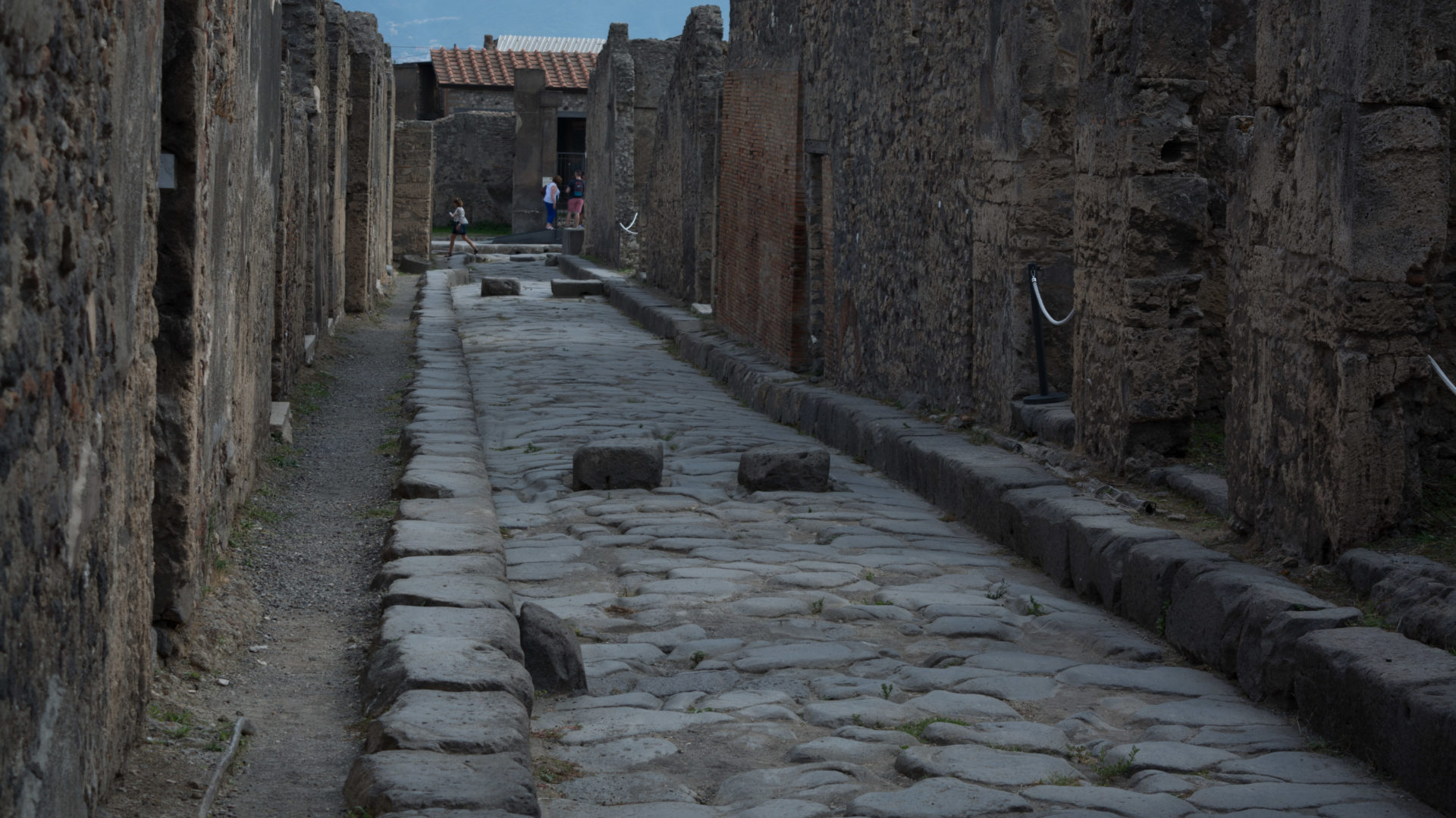On day 2 we headed South to visit Paestum. This site is a long drive from Pompeii, so we got up before sunrise to get an early start. After some coffee and a light breakfast we piled into the bus and started on our way. As we headed South we passed the Amalfi coast, a popular and picturesque vacation spot overlooking the Mediterranean. We stopped very briefly to grab a quick photo:
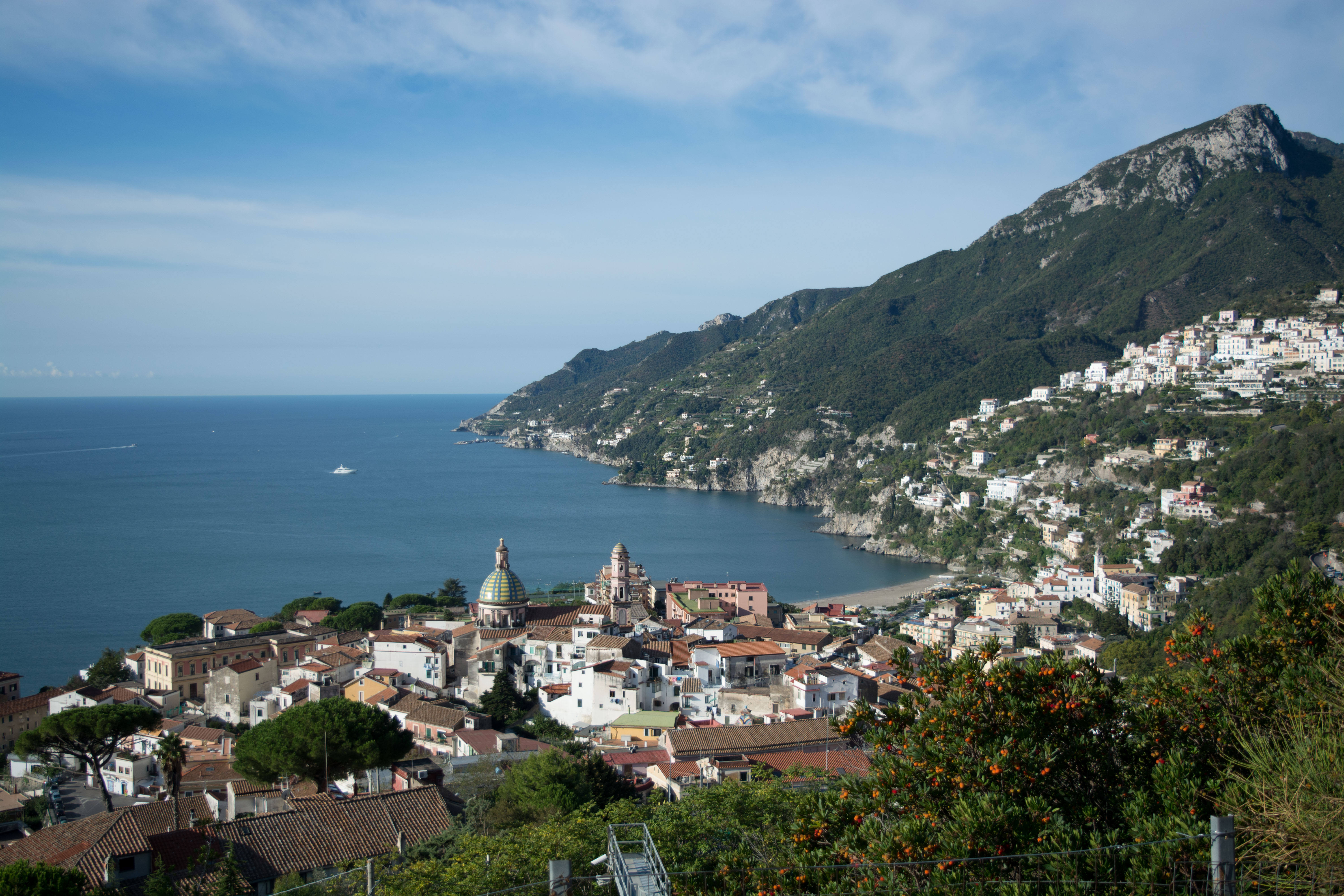
We also passed the beaches of Salerno. During World War II these beaches were the site of heavily-opposed Allied landings. US General Mark Clark, who at 45 years of age was the youngest American general of the war, was in charge of the invasion. He was later awarded the Distinguished Service Cross (second only to the Medal of Honor) for the leadership he displayed here:
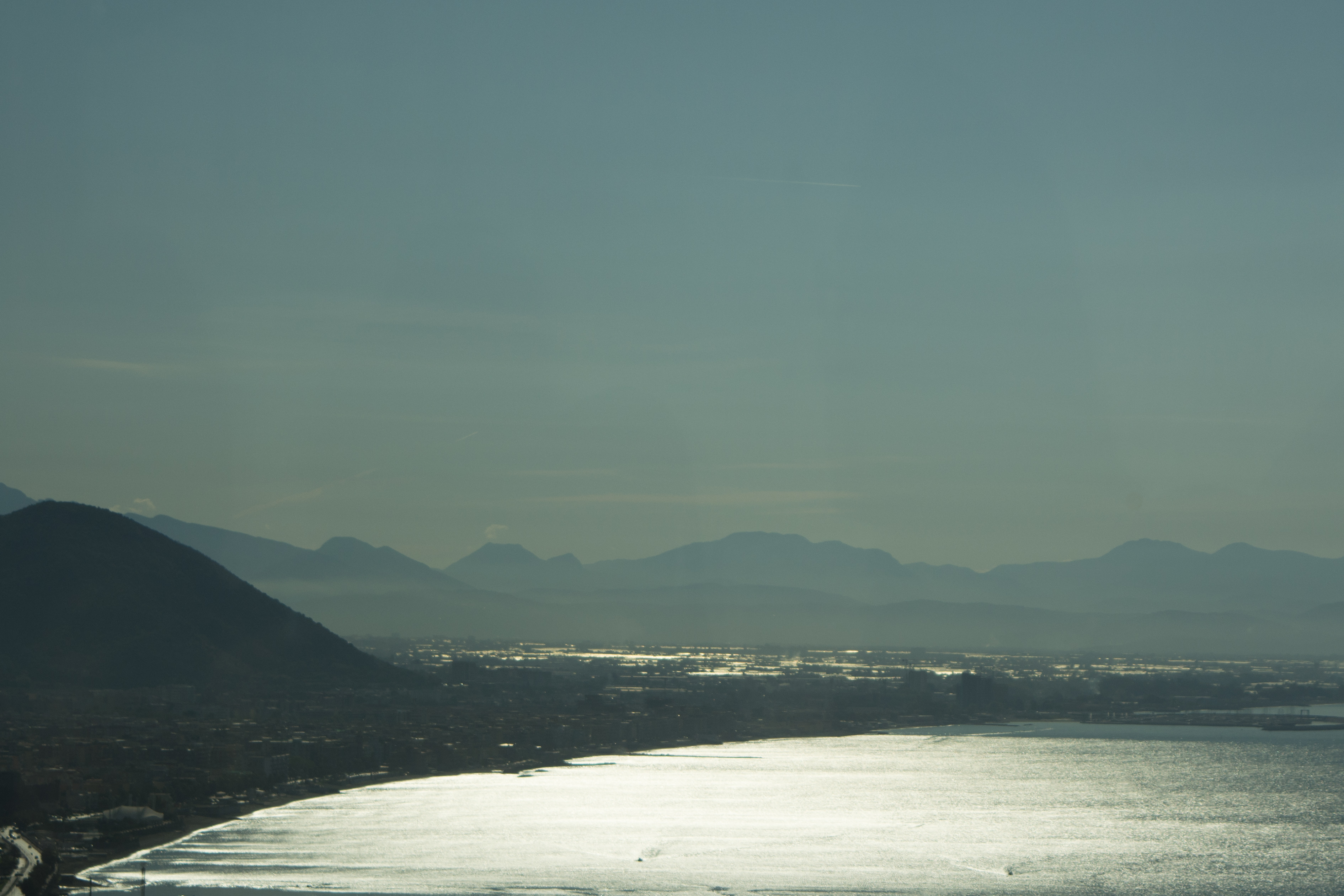
Upon arriving at Paestum, the bus took a detour to drive us around the original city walls (all of which are still intact and visible) while Tony explained the town’s history. The area was originally settled around the 7th century BC as a colony of Greece. The city walls and three temples that the site is famous for were all built around the 6th-5th century BC. The Greeks called the city Poseidonia, meaning “City of Poseidon.” The area went through several wars and conquests before finally becoming a Latin colony in 273 BC and serving as an ally of Rome during the 2nd Punic War (when Hannibal invaded Italy with his elephants). Somewhere along the way the Romans renamed the town from Poseidonia to Paestum. In the 1st Century BC, during the Crisis of the Roman Republic, many of Rome’s former allies turned against her. This period is known in Roman history as the “Social War.” During the war, Paestum stayed loyal to Rome but the nearby city of Pompeii did not. As a result, the Roman general Sulla besieged and attacked Pompeii, smashing though the city gates and leaving damage that is still visible (photos of that in Day 3’s post). Meanwhile, for her loyalty, Paestum was spared destruction and later made into a full Roman colony.
Once inside the city we first approached the Temple of Athena. The temple was built around 500BC and was later used as a Christian church:
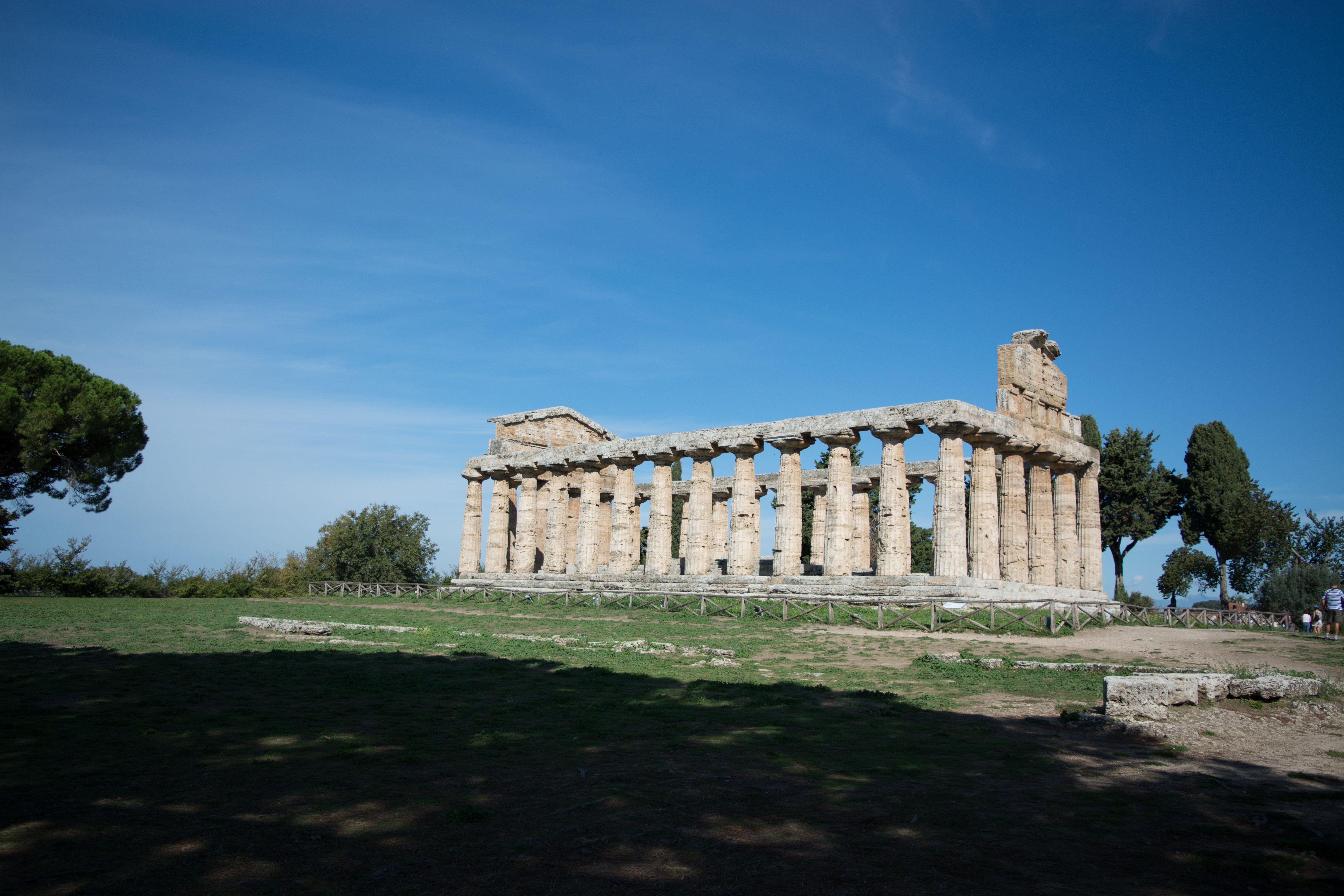
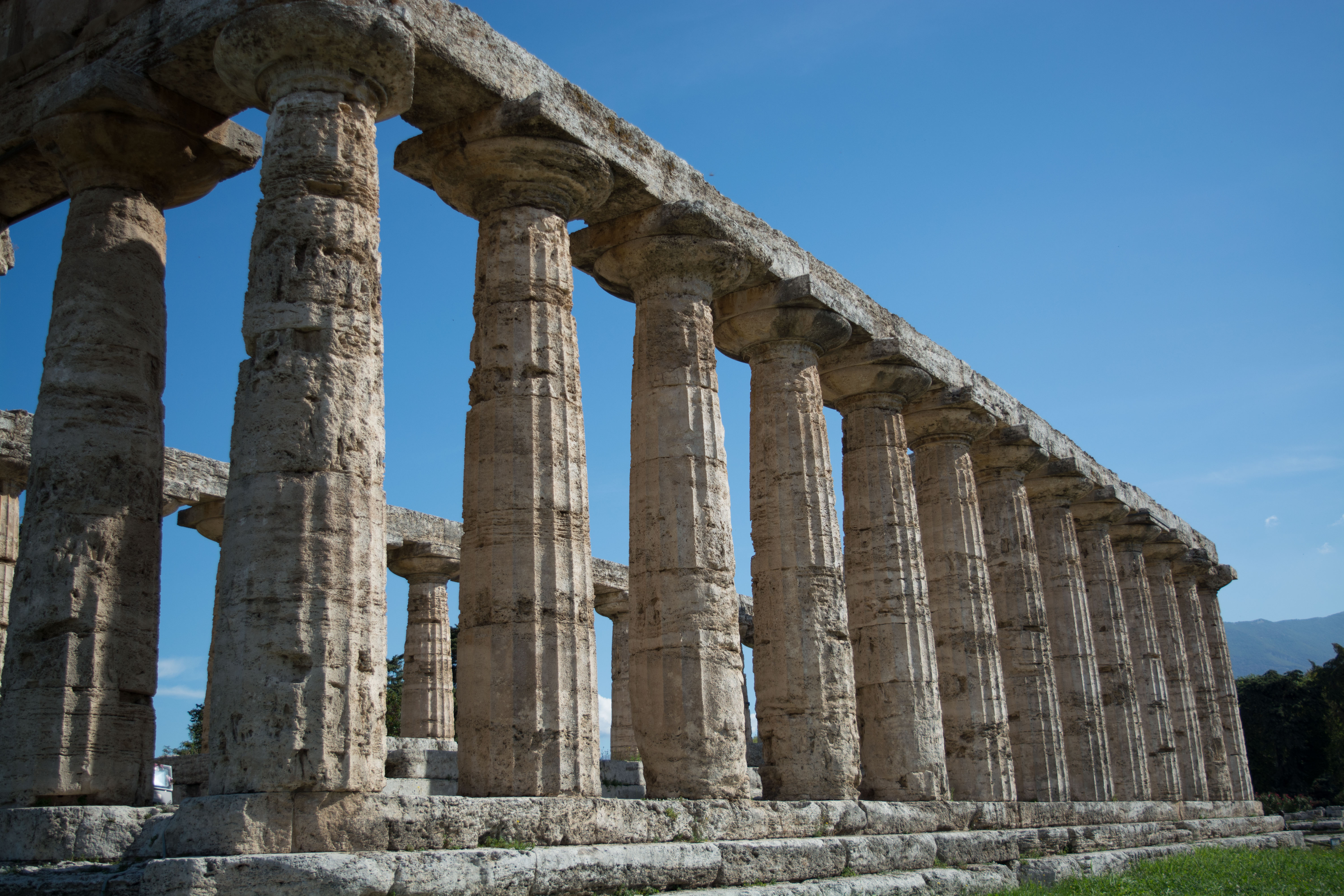
The architecture consists of a mix of Doric and Ionic influences, and this is the earliest known example of that particular style.
Next we went to look at the Heroon, a small shrine from the 6th century BC that was once buried in a mound. In this picture Tony is standing nearby explaining it to us:
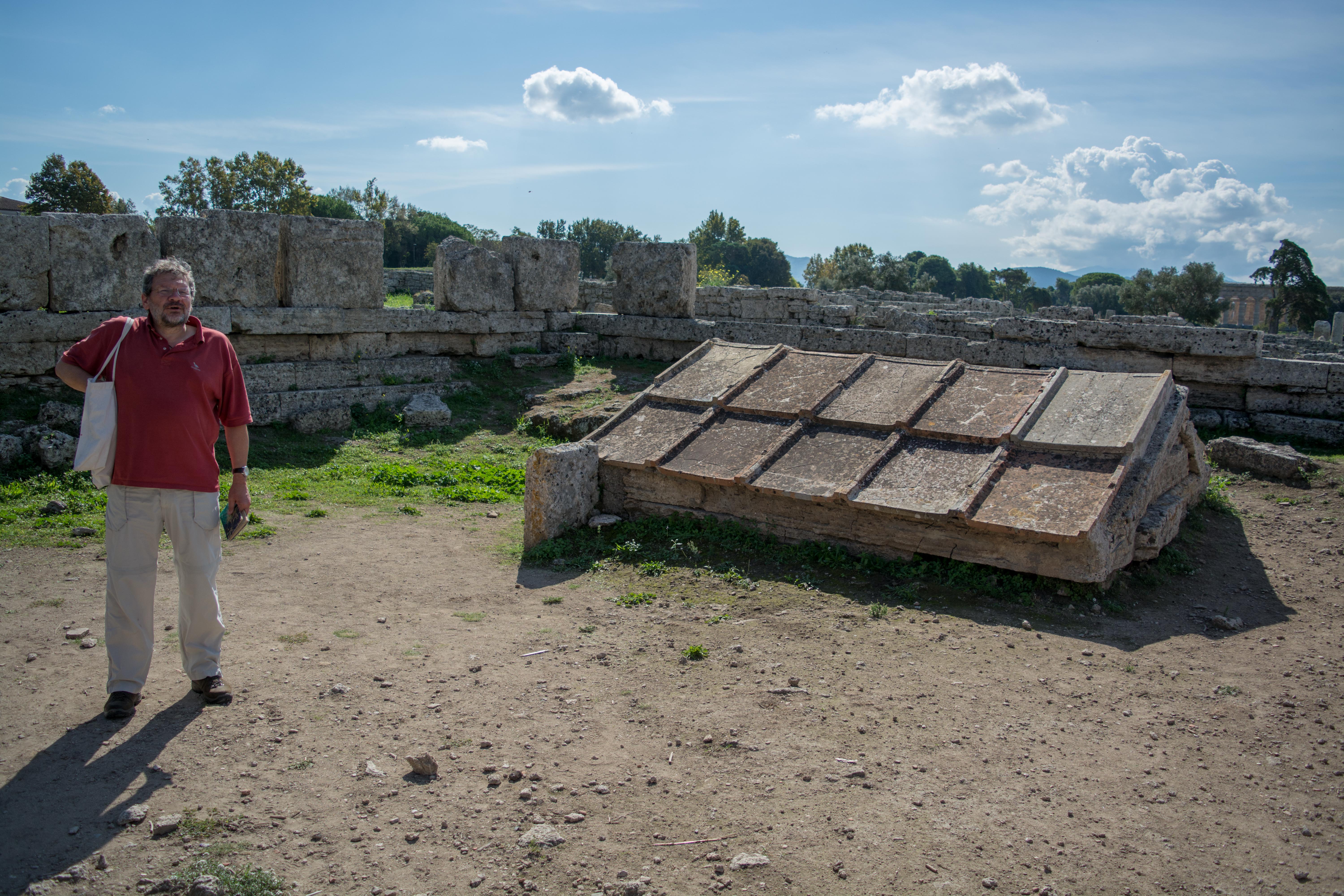
This is believed to have been a monument to the town’s founder and, when excavated, contained 6 bronze water jars and 2 bronze amphorae. Those are now on display in the nearby archaeological museum. One of the jars contained honey, and the honey is on display next to the jars (pictures farther down).
Next we went to look at the ruins of a typical Roman house. This floor plan was very common in the Roman Empire and prepared us to recognize the things we would see in Pompeii the next day:
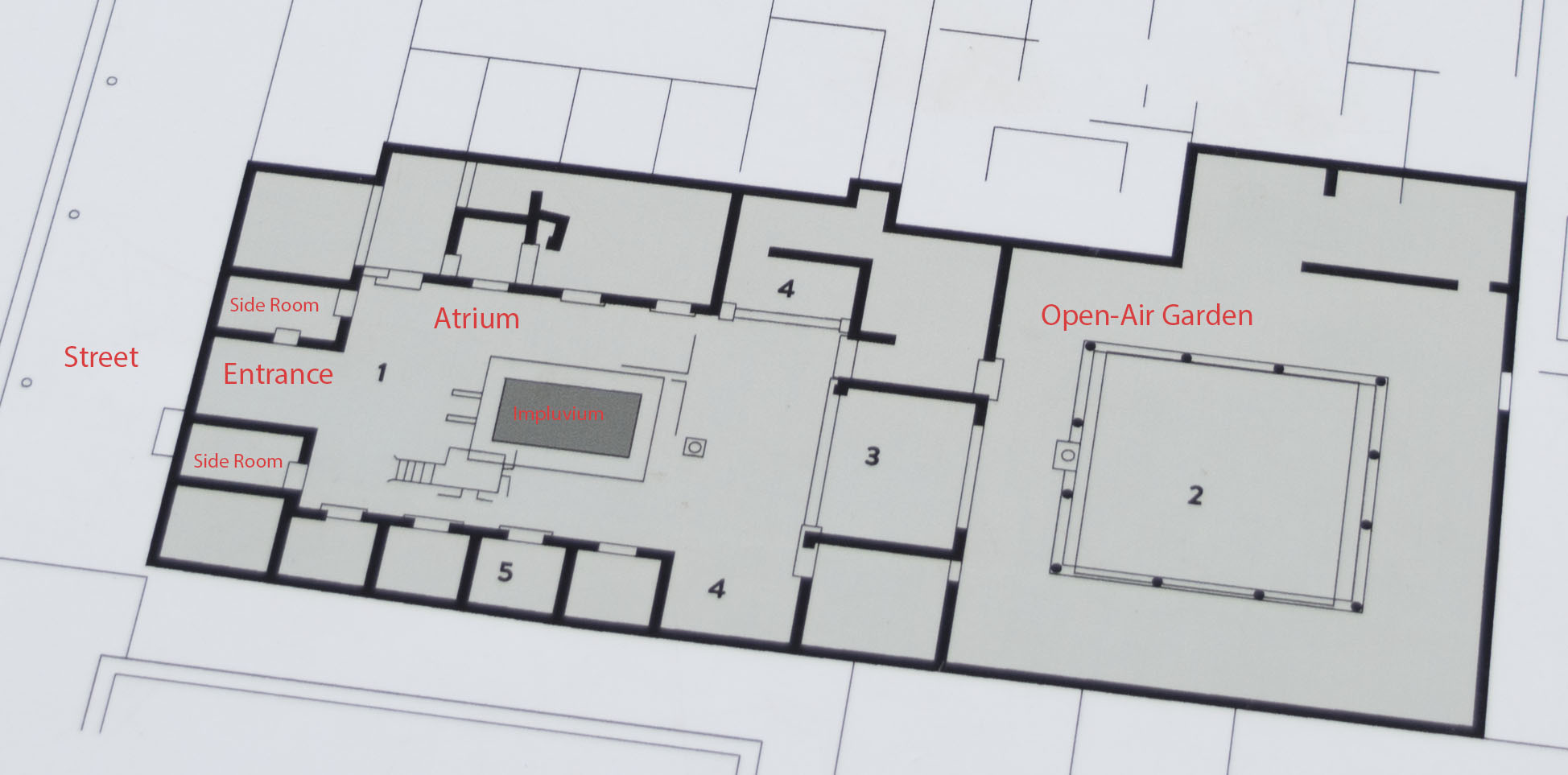
The two small rooms on either side of the entrance were multi-purpose rooms that were sometimes opened to the street and rented out to merchants, who used them as shops. This practice of renting out the front rooms was particularly common in Pompeii. The large room just inside the entrance is the Atrium, the most important room of the house, where guests and clients would be welcomed by the owner. In the middle is an impluvium, a marble-lined pool which would have collected rain water from an opening in the roof above. At the rear of the atrium was a wooden partition which could be removed to make the room larger (for hosting large parties) or closed off for privacy (while meeting a business partner). Most Roman houses would also have included a Tablinum (office) and a Triclinium (dining room).
In the entrances to the side rooms, cutouts for the wooden door and its mechanisms are still visible:
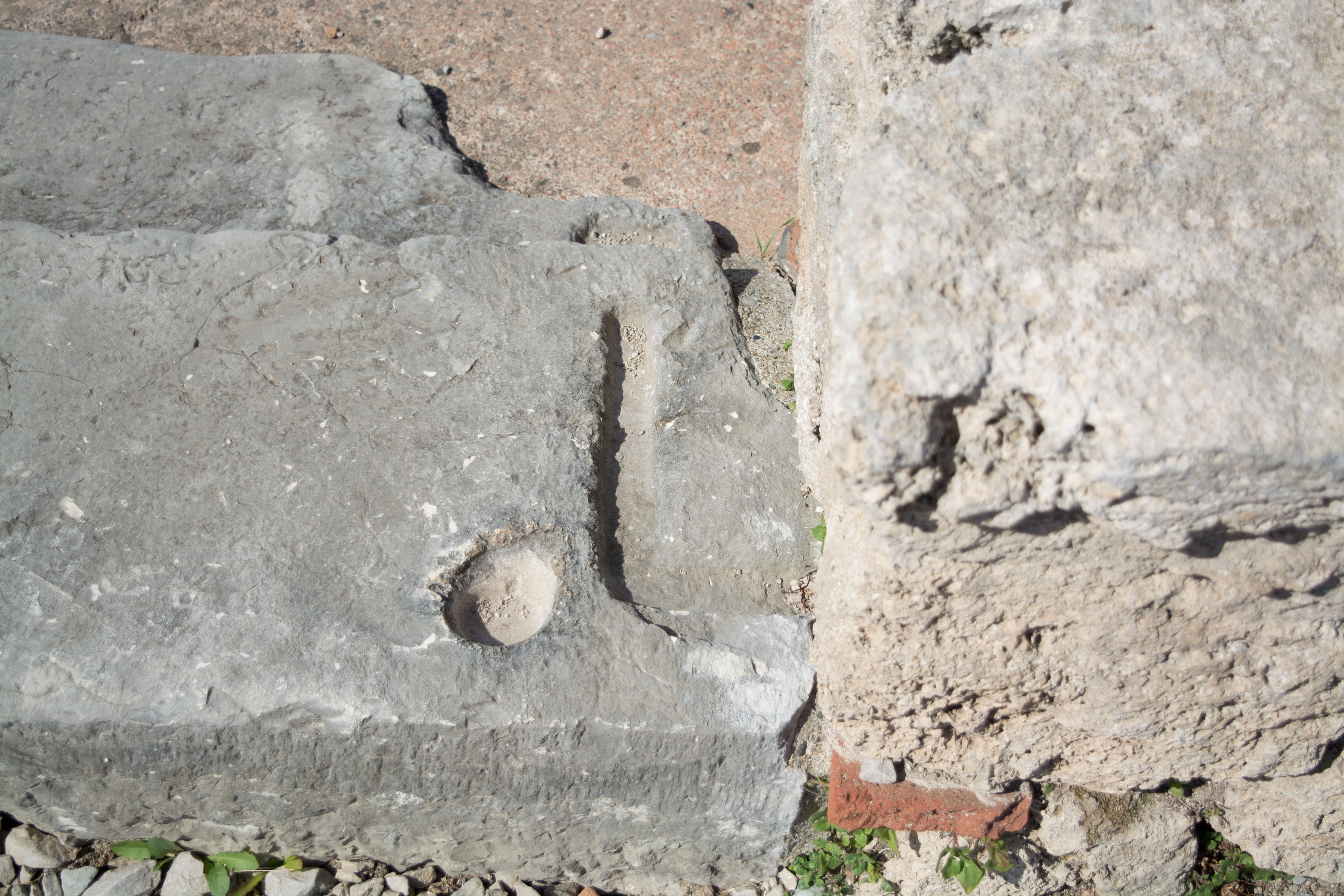
The marble-lined impluvium at the center of the atrium:
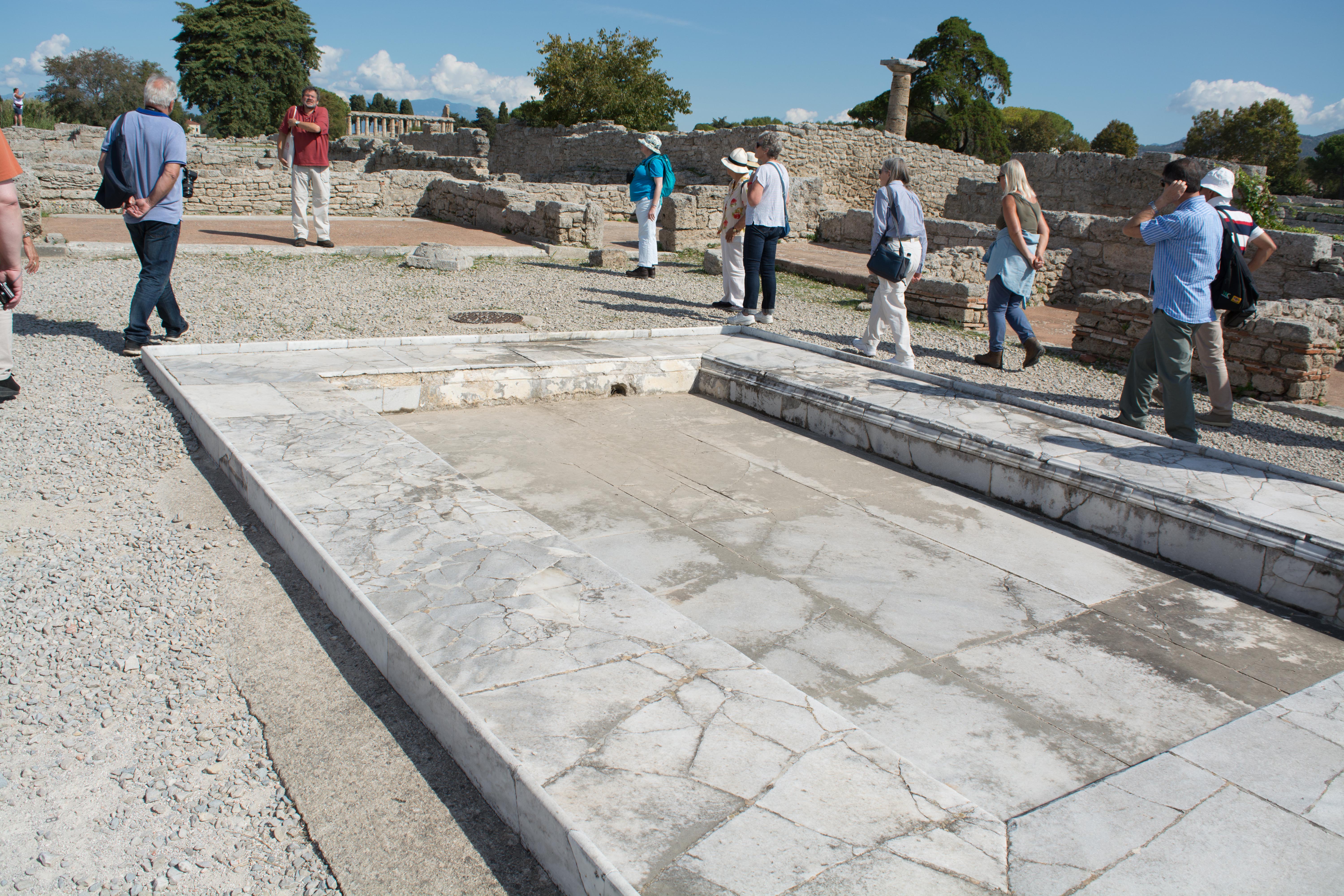
And an open-air garden at the rear of the house:
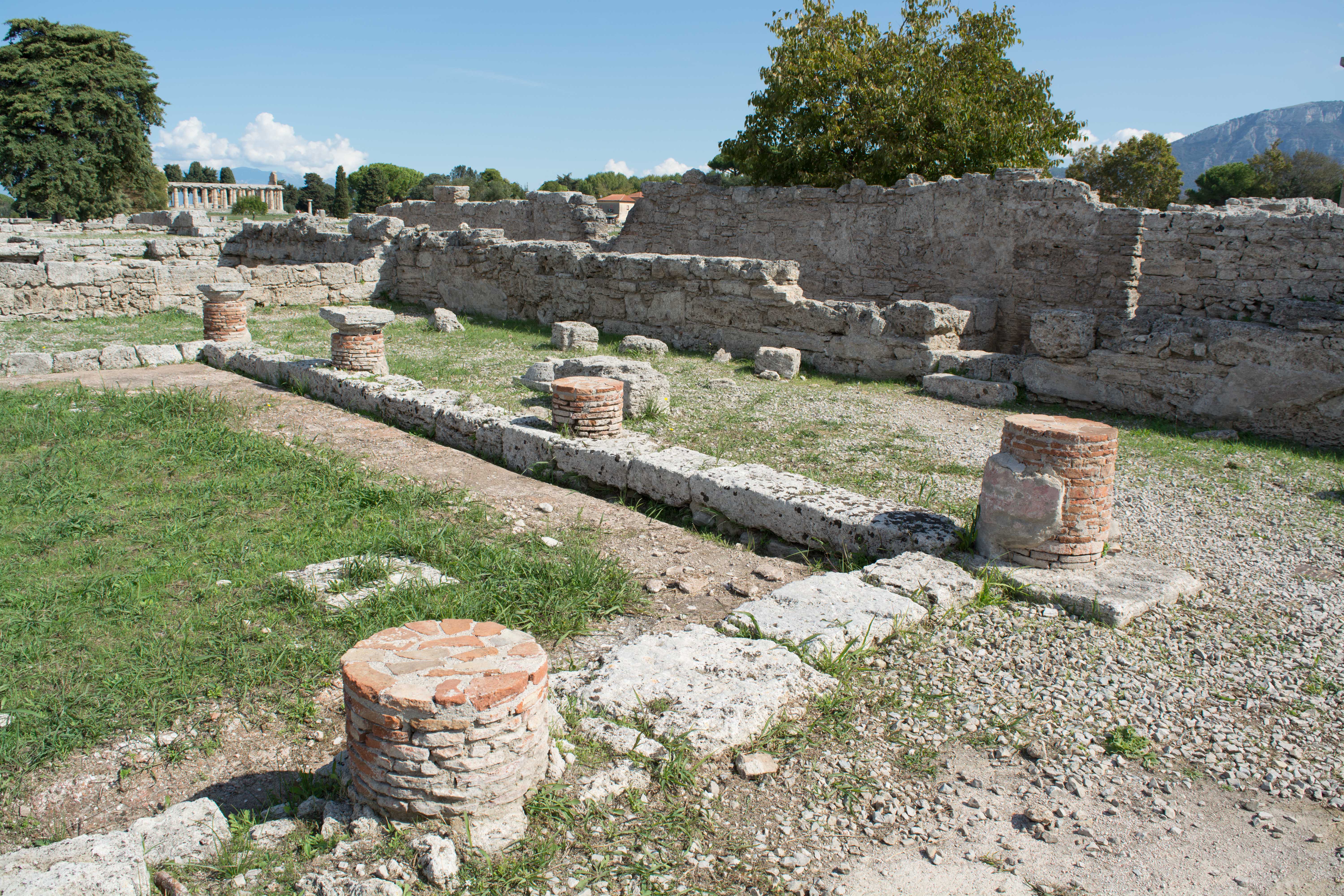
This house also includes an attached kitchen, which was once part of the neighbor’s house but was later bought and connected to this house. Having a kitchen installed in your home was very expensive at this early period in history. Buying off a section of the neighbor’s house made it even more expensive. Clearly this homeowner was very wealthy:
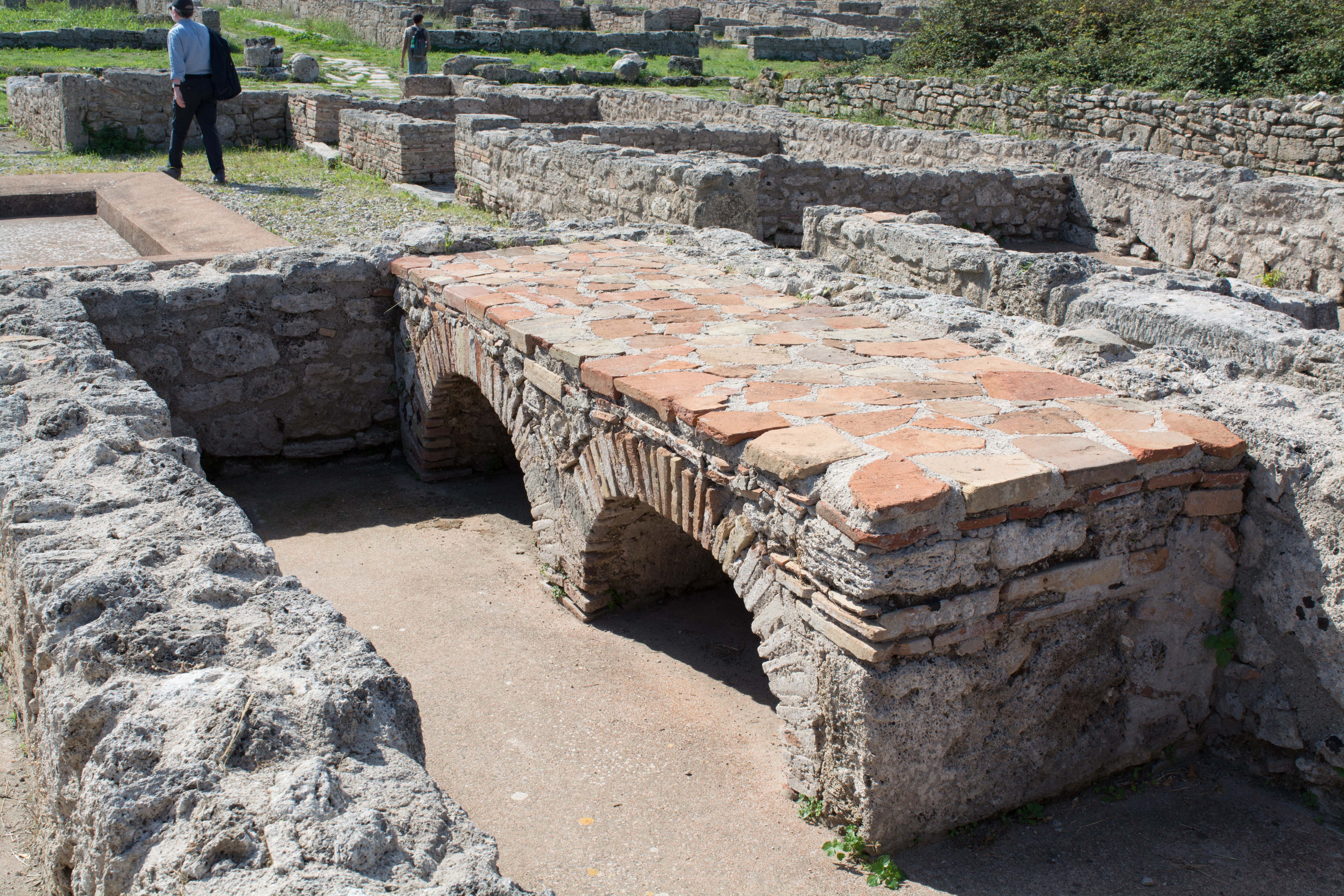
Moving on, we come to the next temple which is actually the youngest of the three. It was built in 470BC. It was once known as the Temple of Neptune but is actually built to Hera:
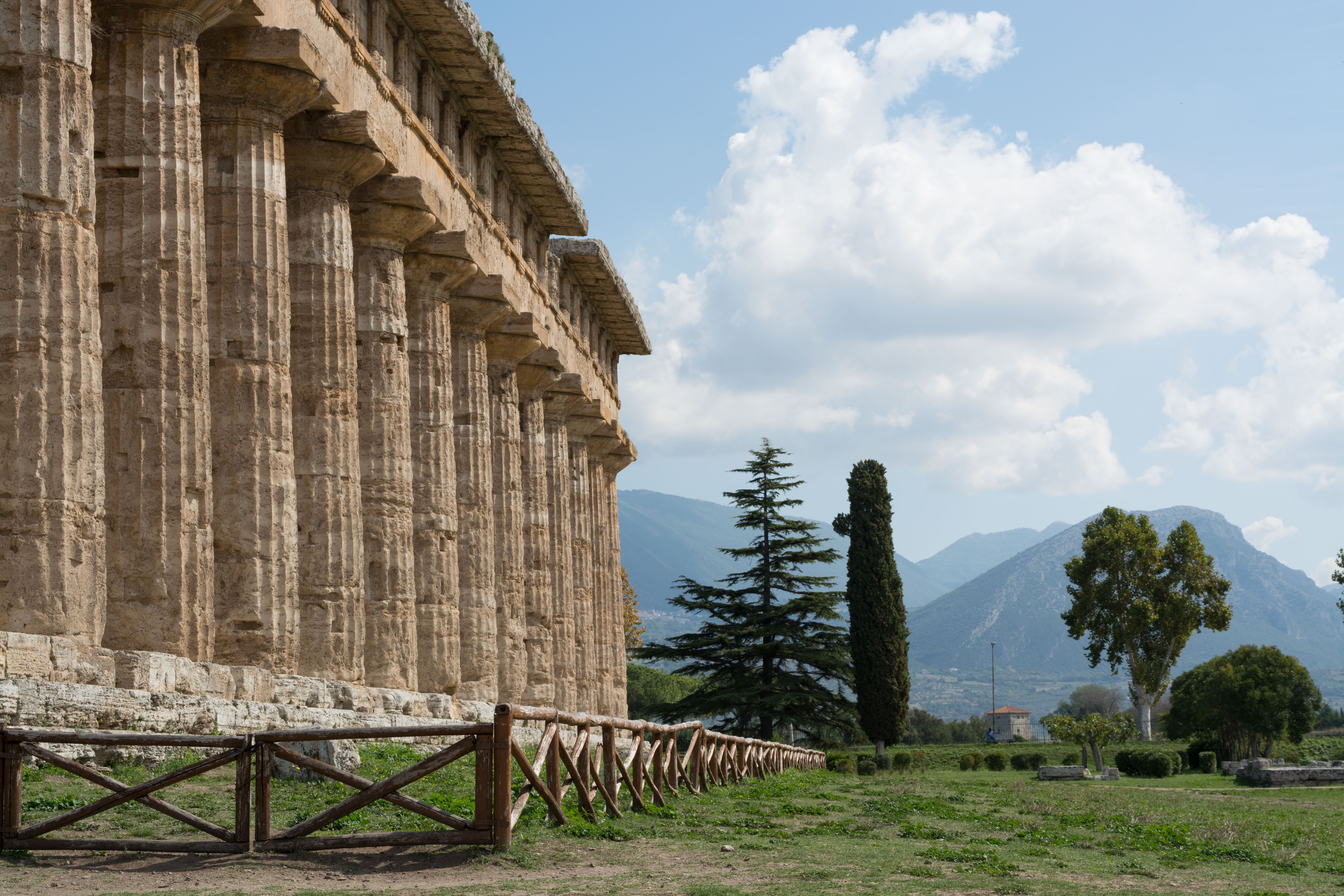
This picture, with the man standing between the columns, gives a good idea of scale. This is actually the third and final temple at the site, also built to honor Hera, and is in the worst shape of all three:
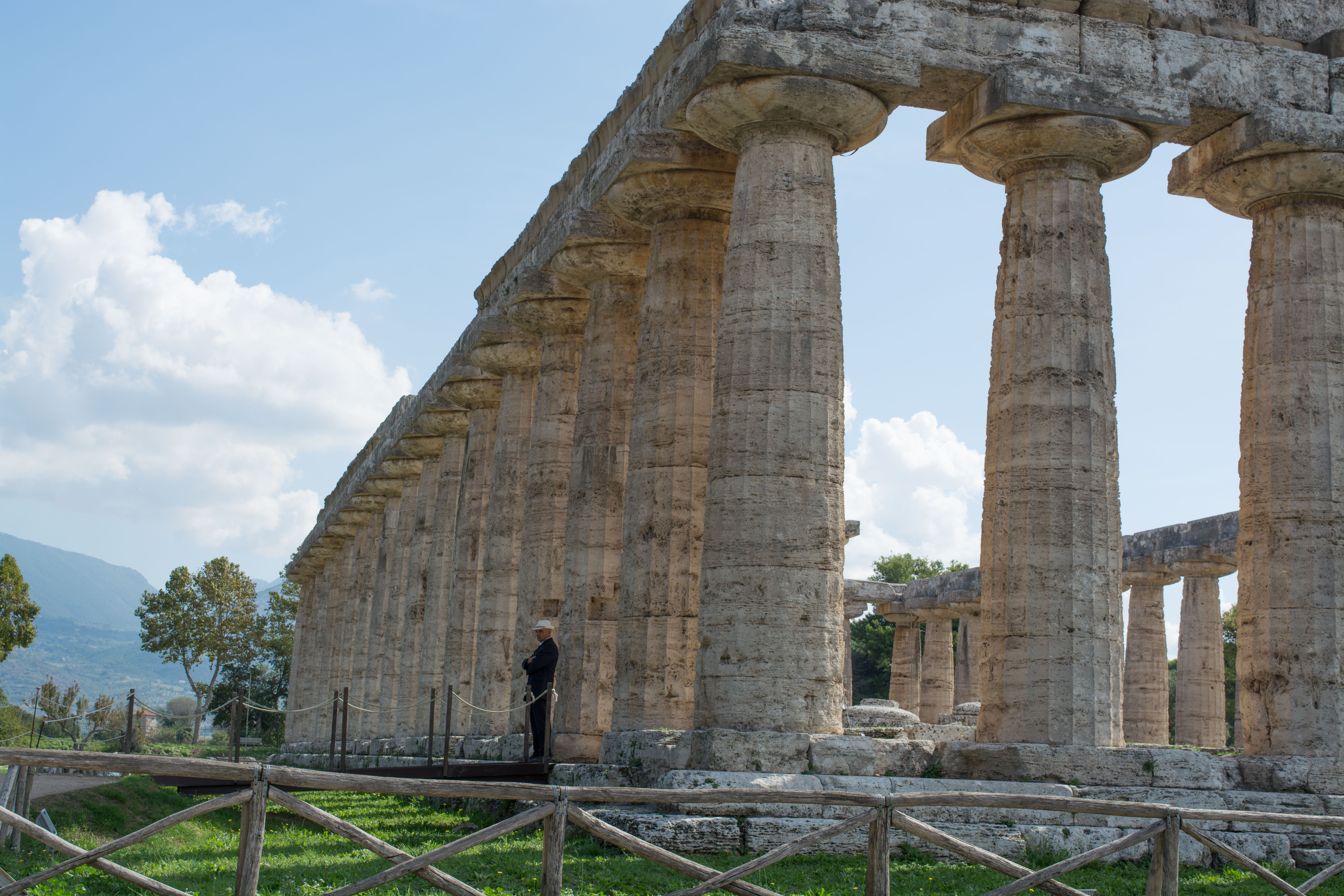
Moving back over to the younger Temple of Hera, here are a few more pictures:
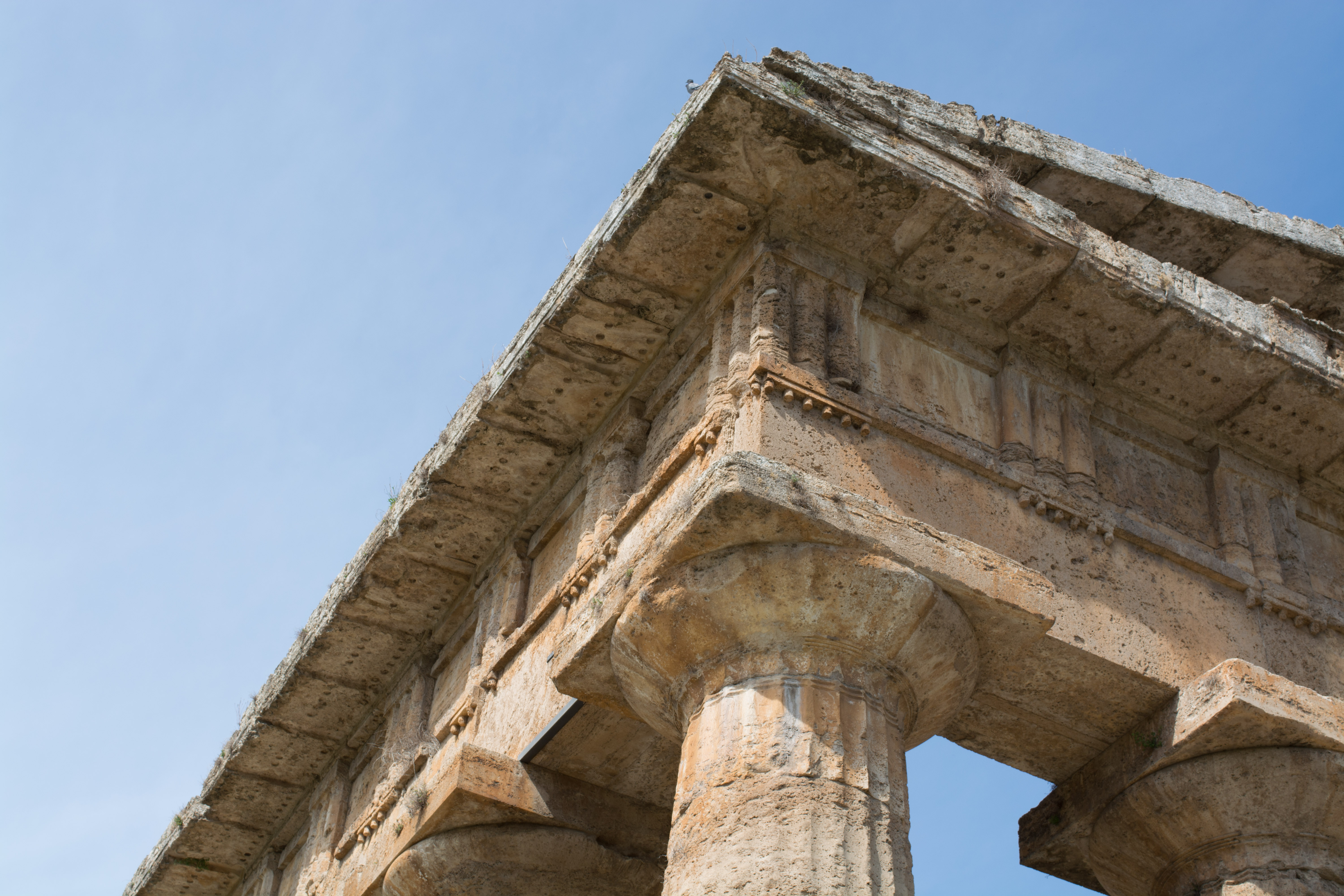
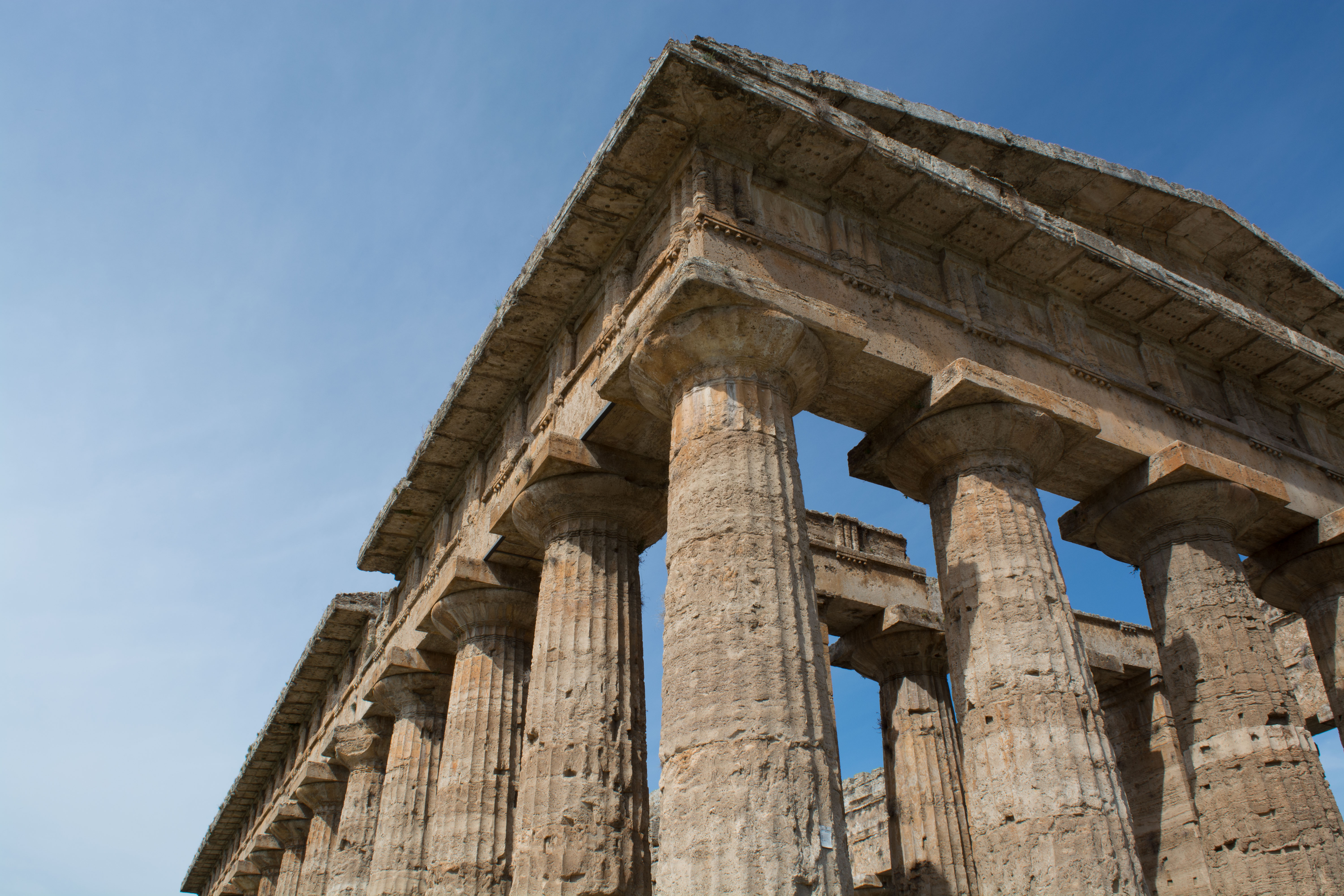
This temple was built at the same time as the famous Temple of Zeus at Olympia, and has similar architecture. It is one of our best models for what that great temple would have looked like.
Tony was very excited to be able to take us inside this temple (younger Hera), because previously it was closed to the public and tour groups could only view the exterior. What a great opportunity this was! Inside, some of the interior elements are still standing:
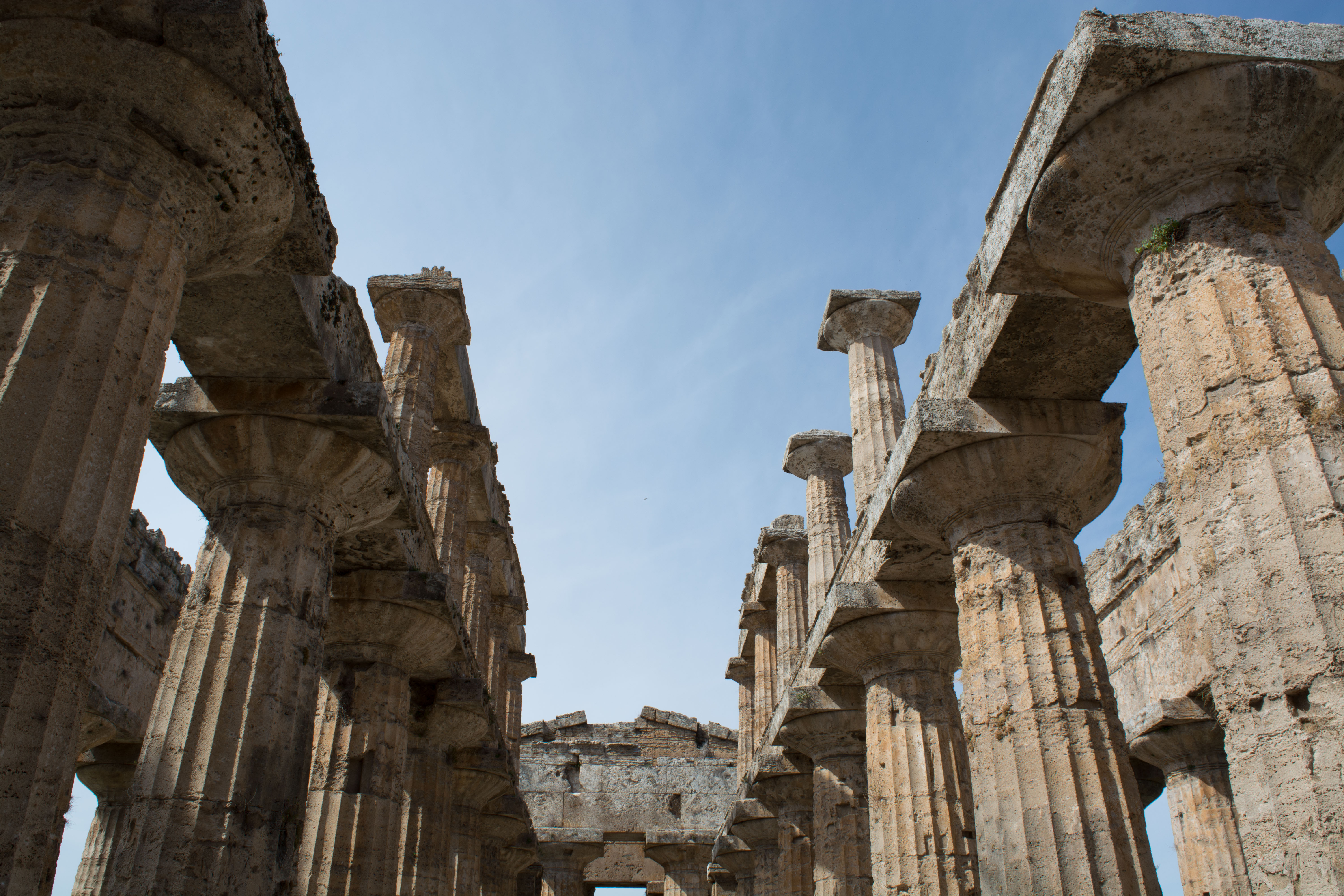
And on some of the columns, original plaster (the small white specks) can still be seen:
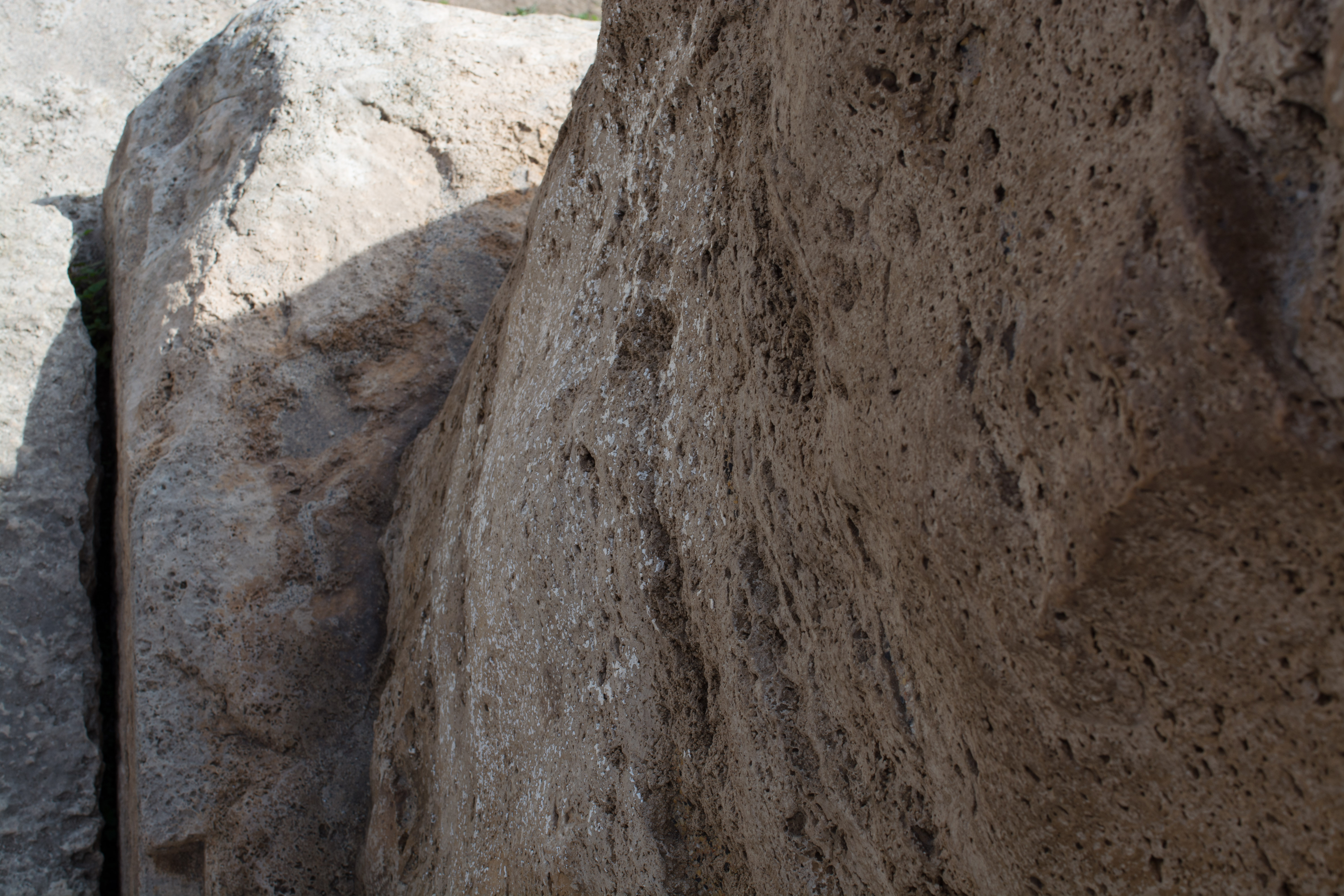
Because of this we were told not to touch or rub up against the columns, so as not to damage or remove the plaster.
At a nearby Roman house a column has fallen apart in sections, giving us a perfect example of how the Romans built their residential columns. This helped to prepare us for what we would see in Pompeii tomorrow. The innermost part of the column is visible at the top, and consists of a brick-and-mortar core. Outside of this (further down in the photograph) would be concrete, and then on the outside (at the bottom of the photograph) was plaster. The plaster was textured to look nice (this one has vertical lines), and could either be painted or left white:
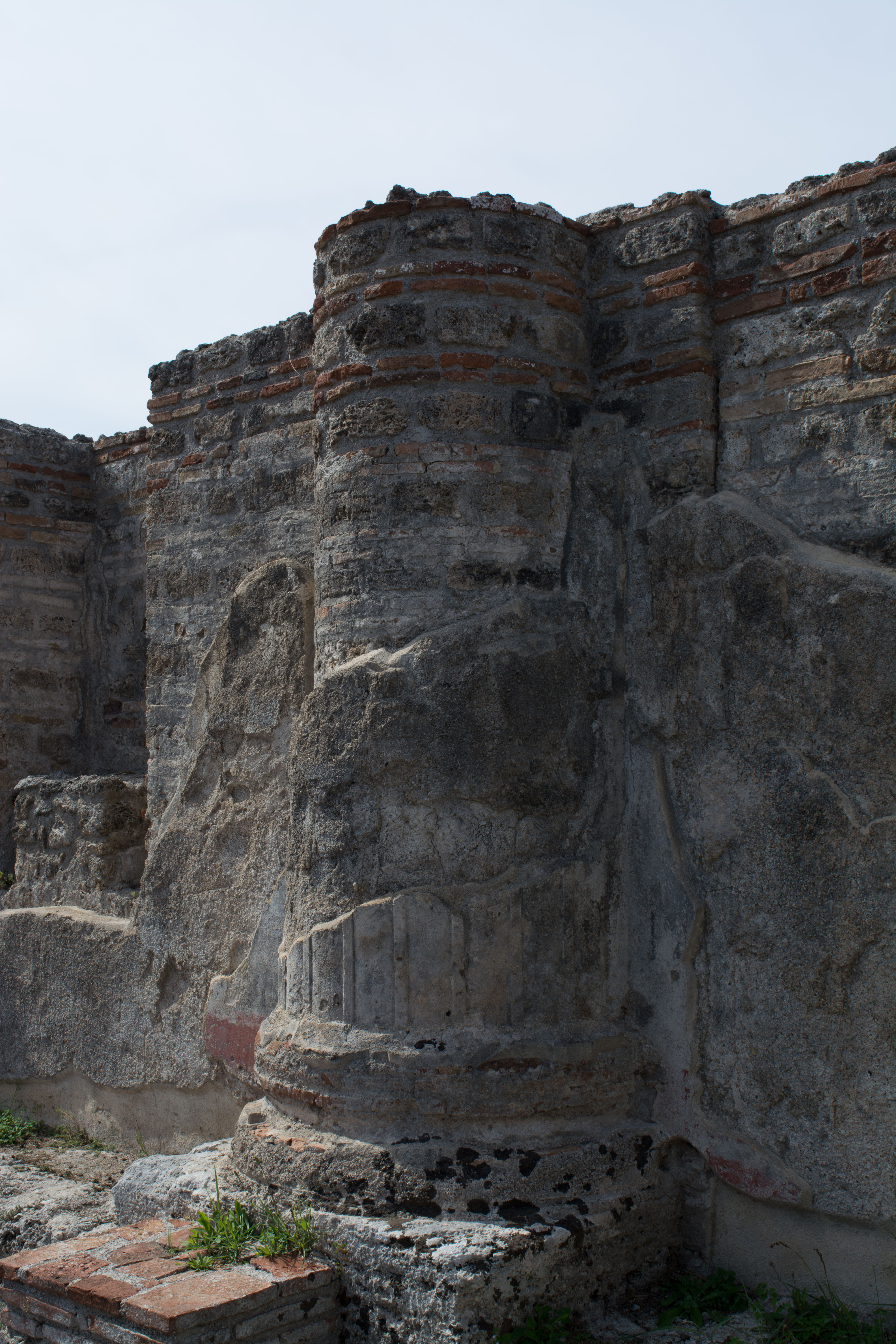
As we head to the Greek council chamber, the old Roman road is easily recognizable:
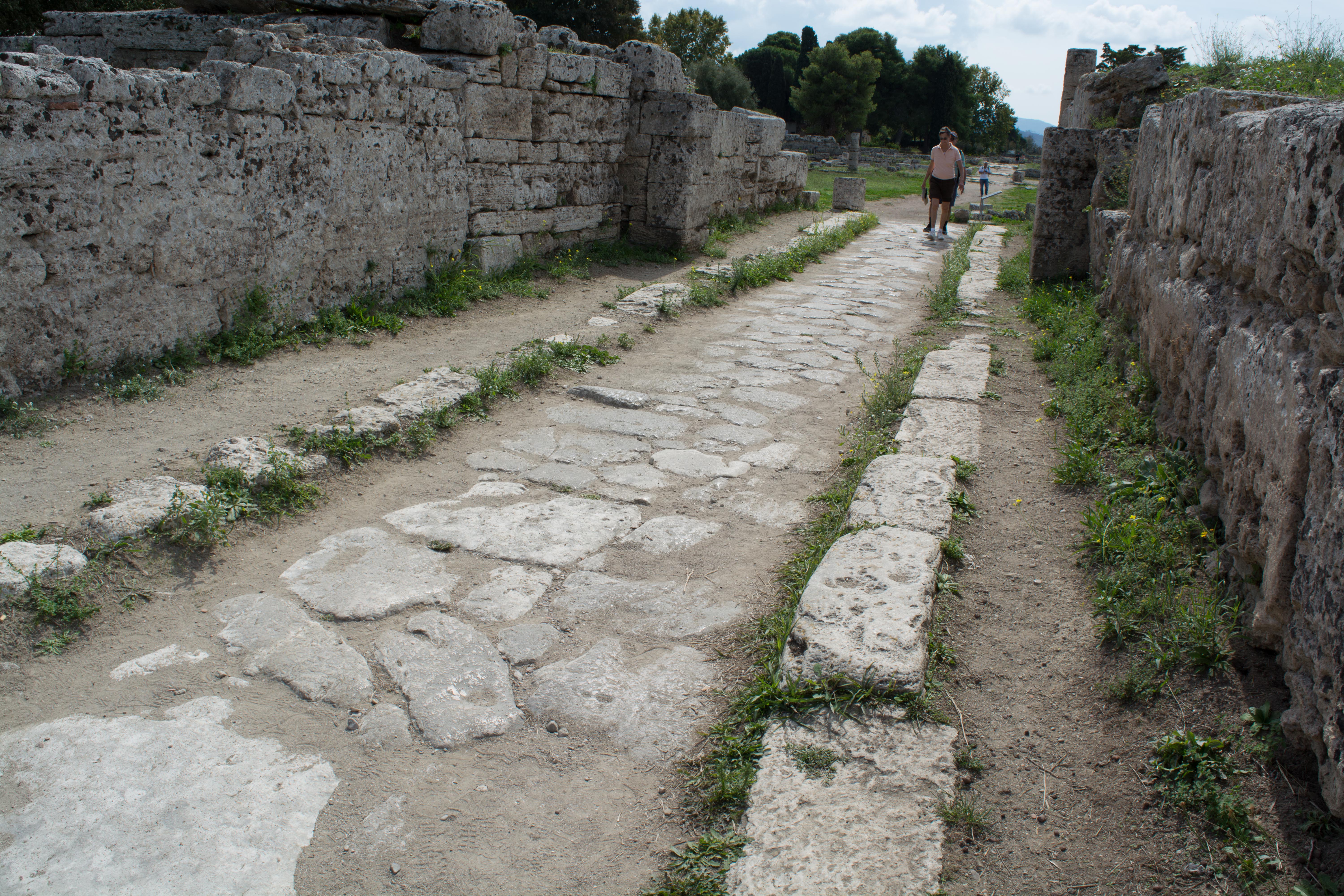
The Greek council chamber is a perfect circle, built into the hillside with seating all around it. Prior to the Romans, while the town was still known as Poseidonia, this is where the voting members of the assembly would have met to debate and cast their votes (before 300BC):
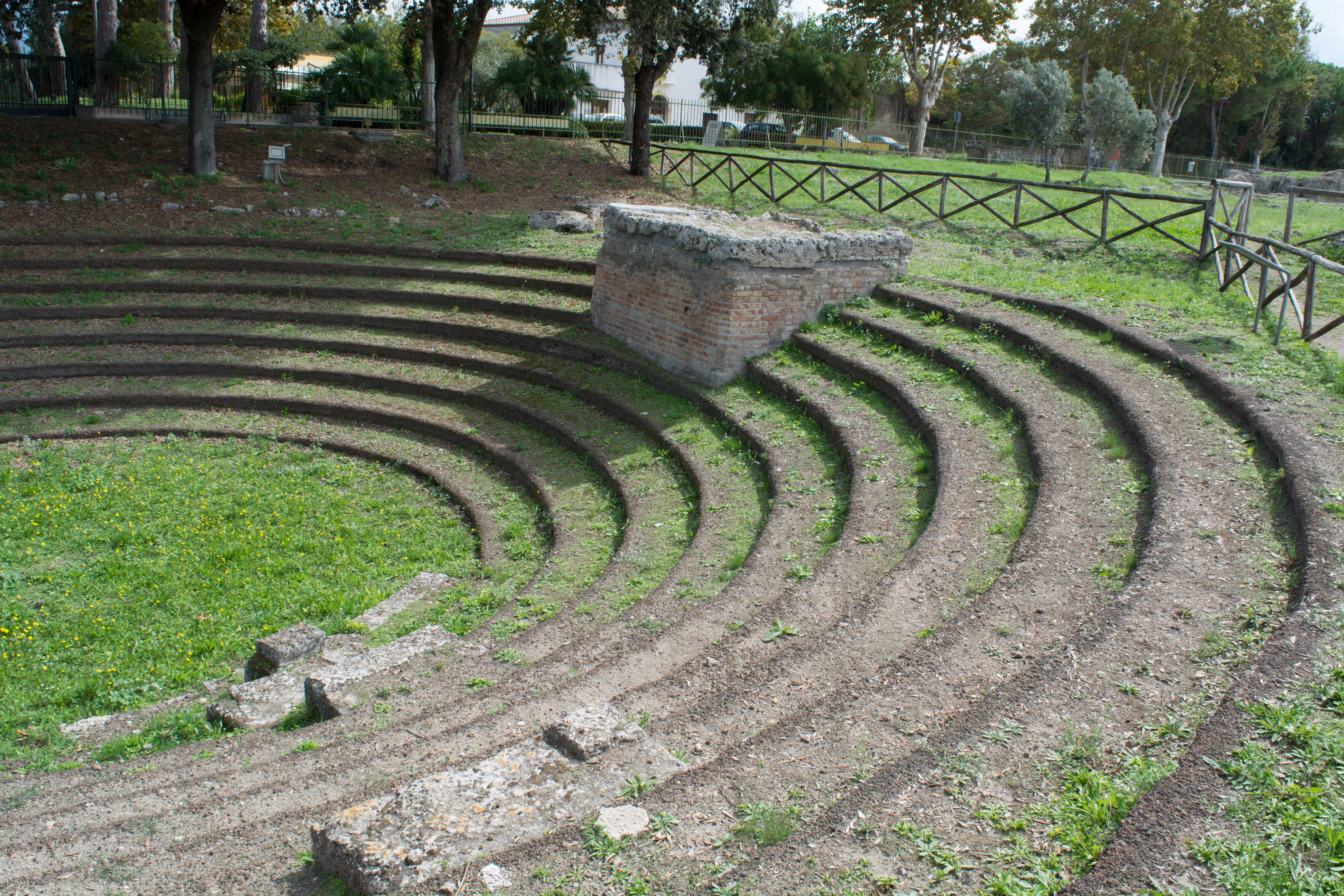
After lunch we headed into the nearby archaeological museum. In here we were free to wander and examine the artifacts on our own, not as a group. The first thing that caught my eye was a pottery fragment with Greek writing still legible on it:
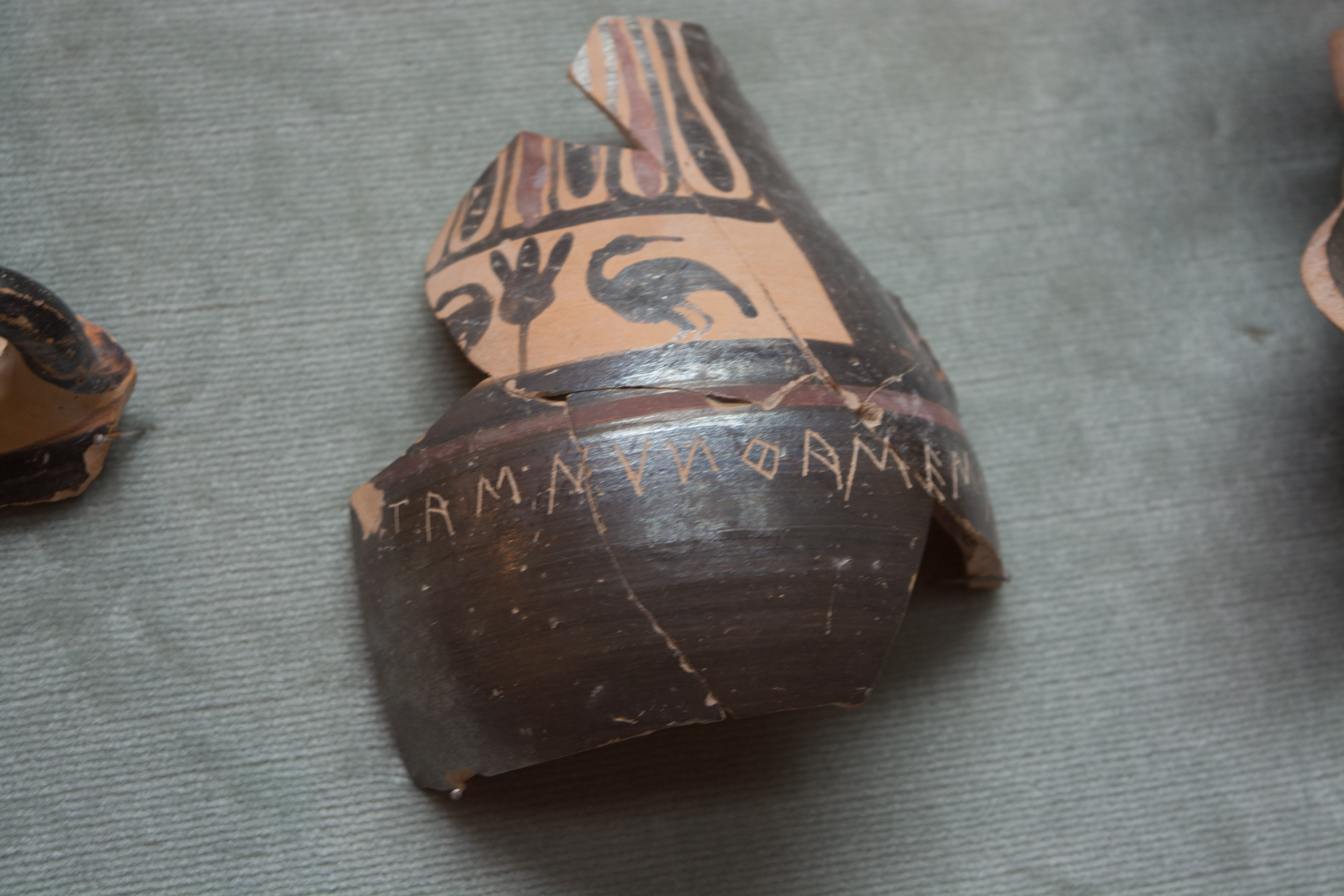
The 6 pots from the Heroon (the 6th-century BC shrine to the town’s founder) were located here in a glass display case, covering most of one wall. The nearly 2700-year-old honey from one of the jars was here too, but it didn’t look particularly appetizing:
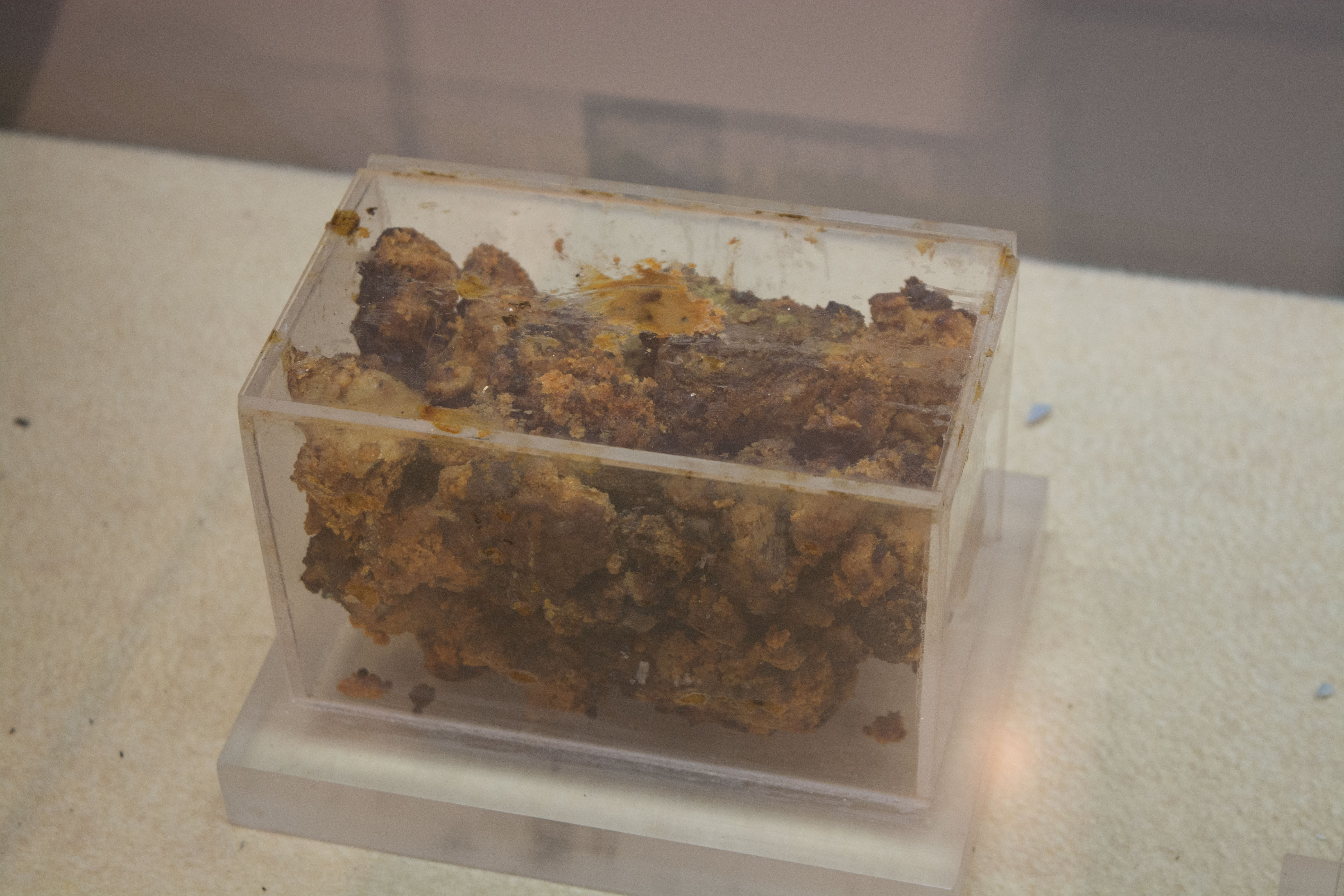
But the detail and craftsmanship on the handles of the jars was really astonishing for such an early time:
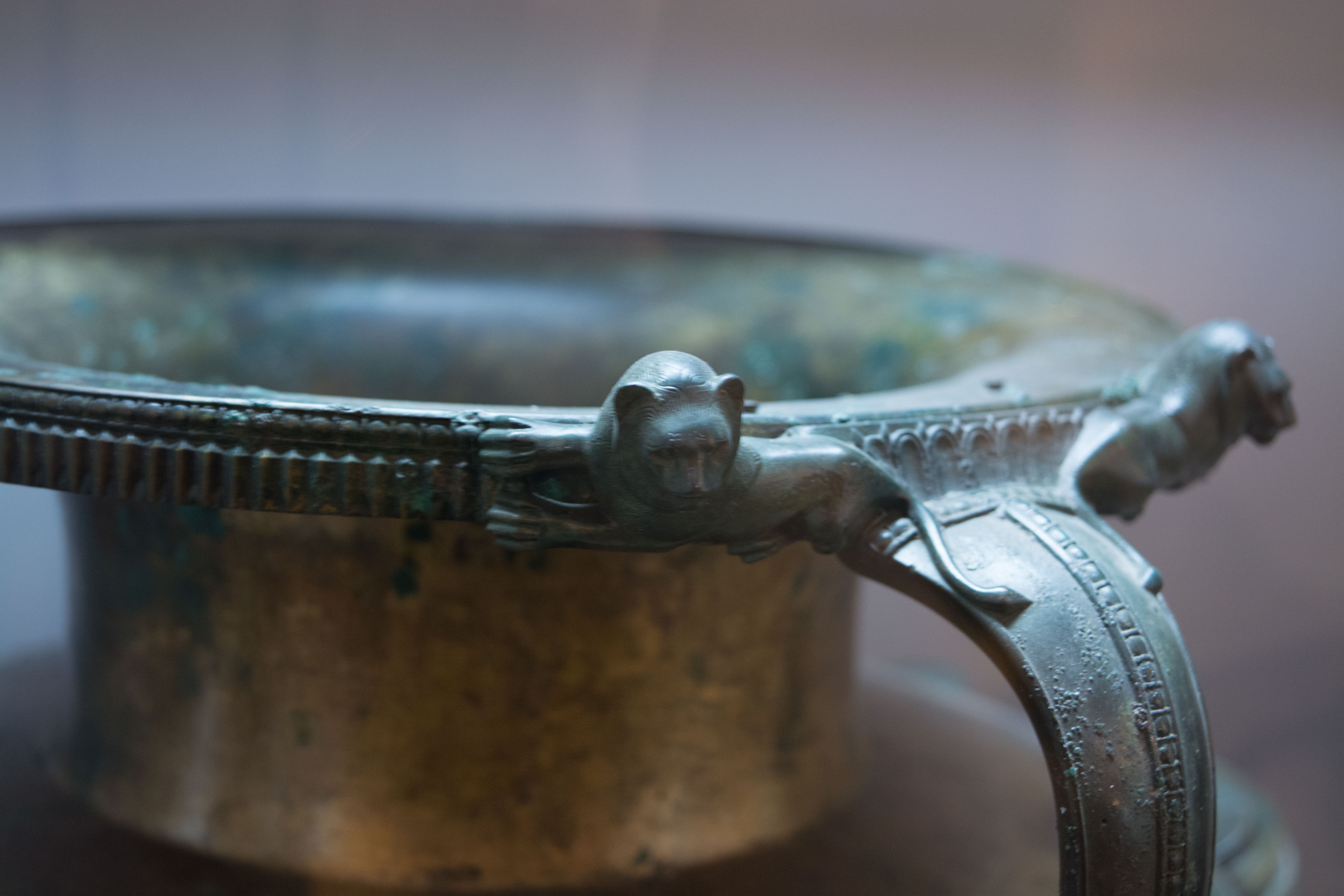
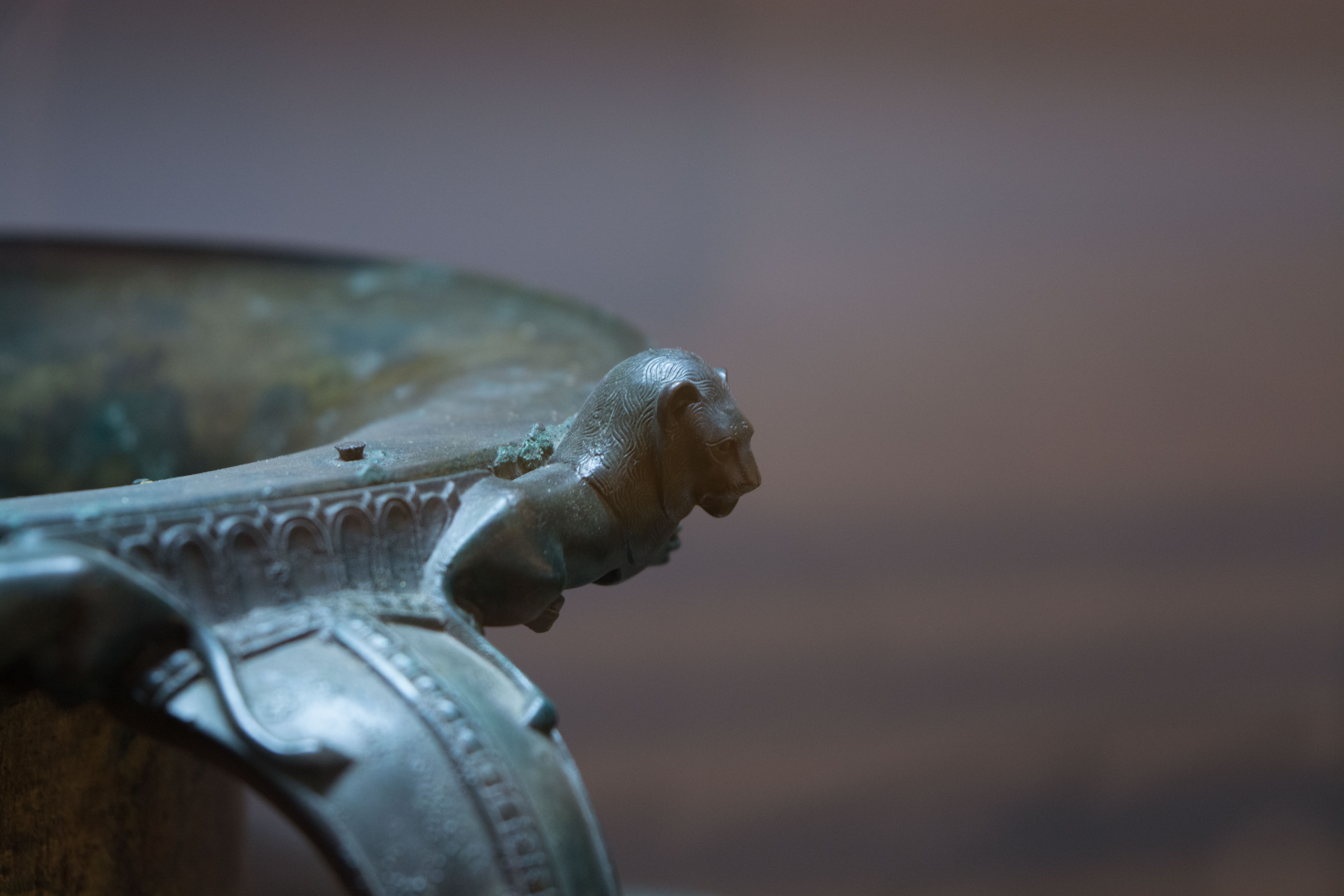
The artwork on the jars was impressive as well:
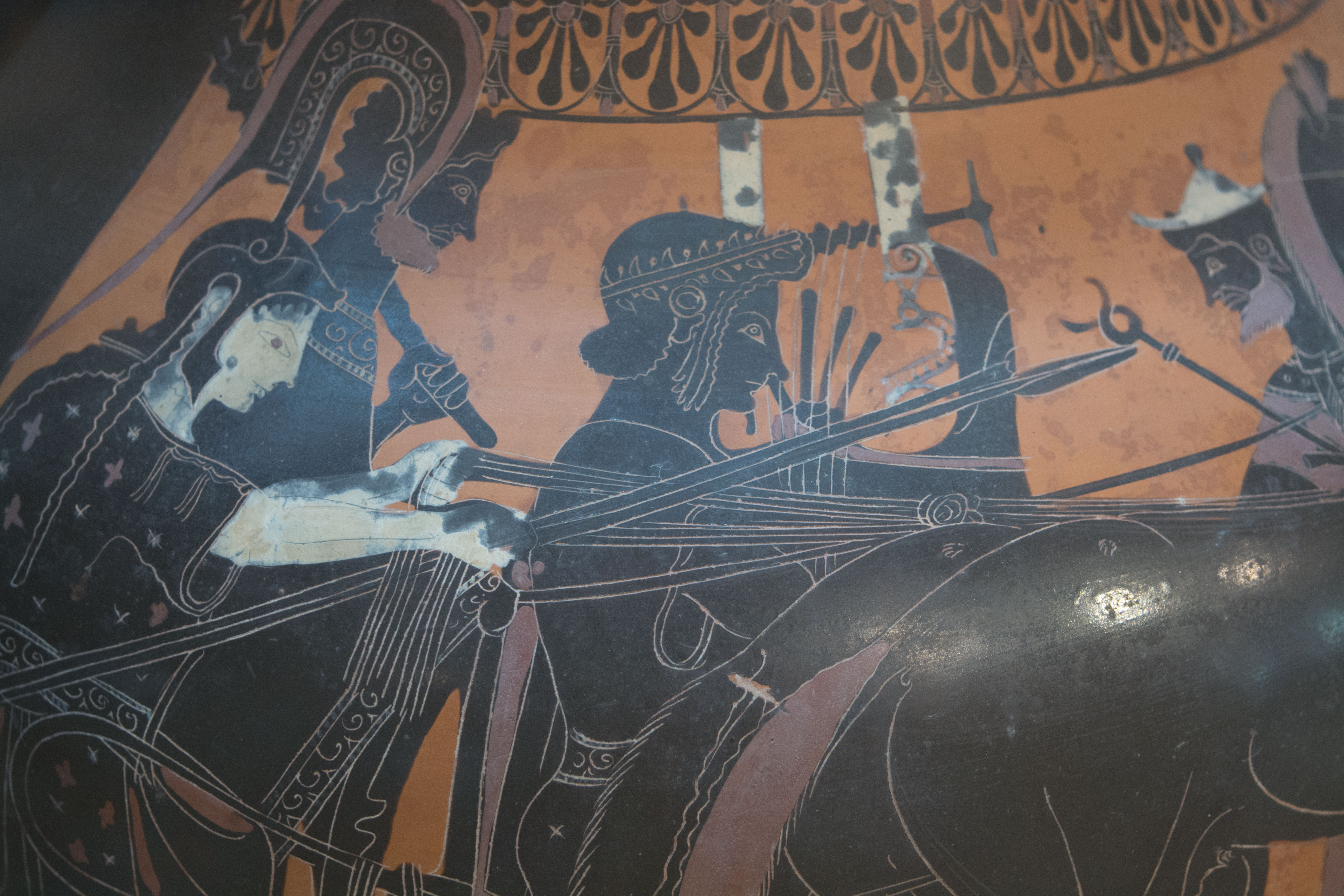
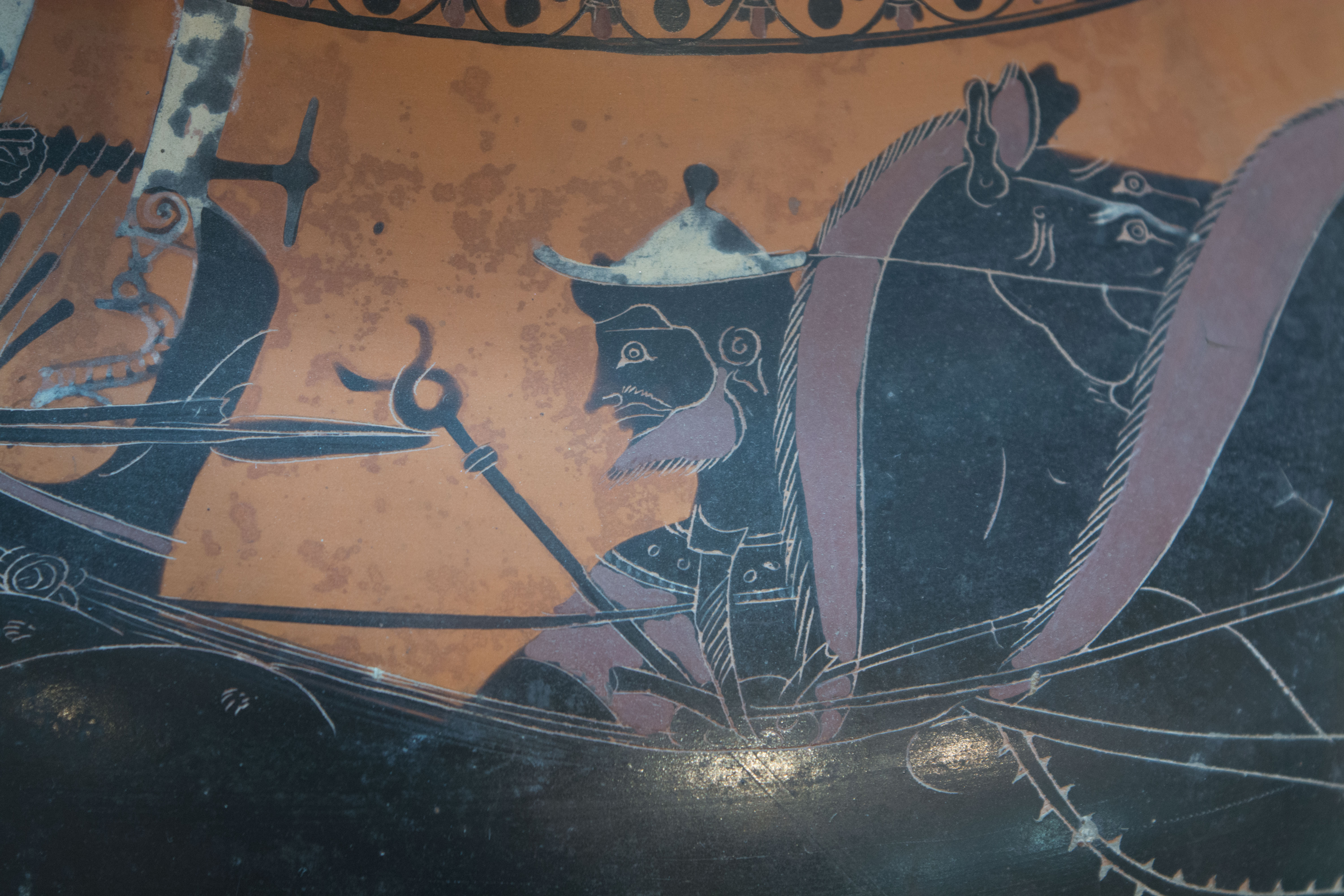
Another item on display was an old (likely Campanian) suit of armor from roughly 400BC, consisting of a chest plate with 3 discs and a helmet with attachments for feathered plumes. The belt and sword can be seen in the bottom right corner of the photograph:
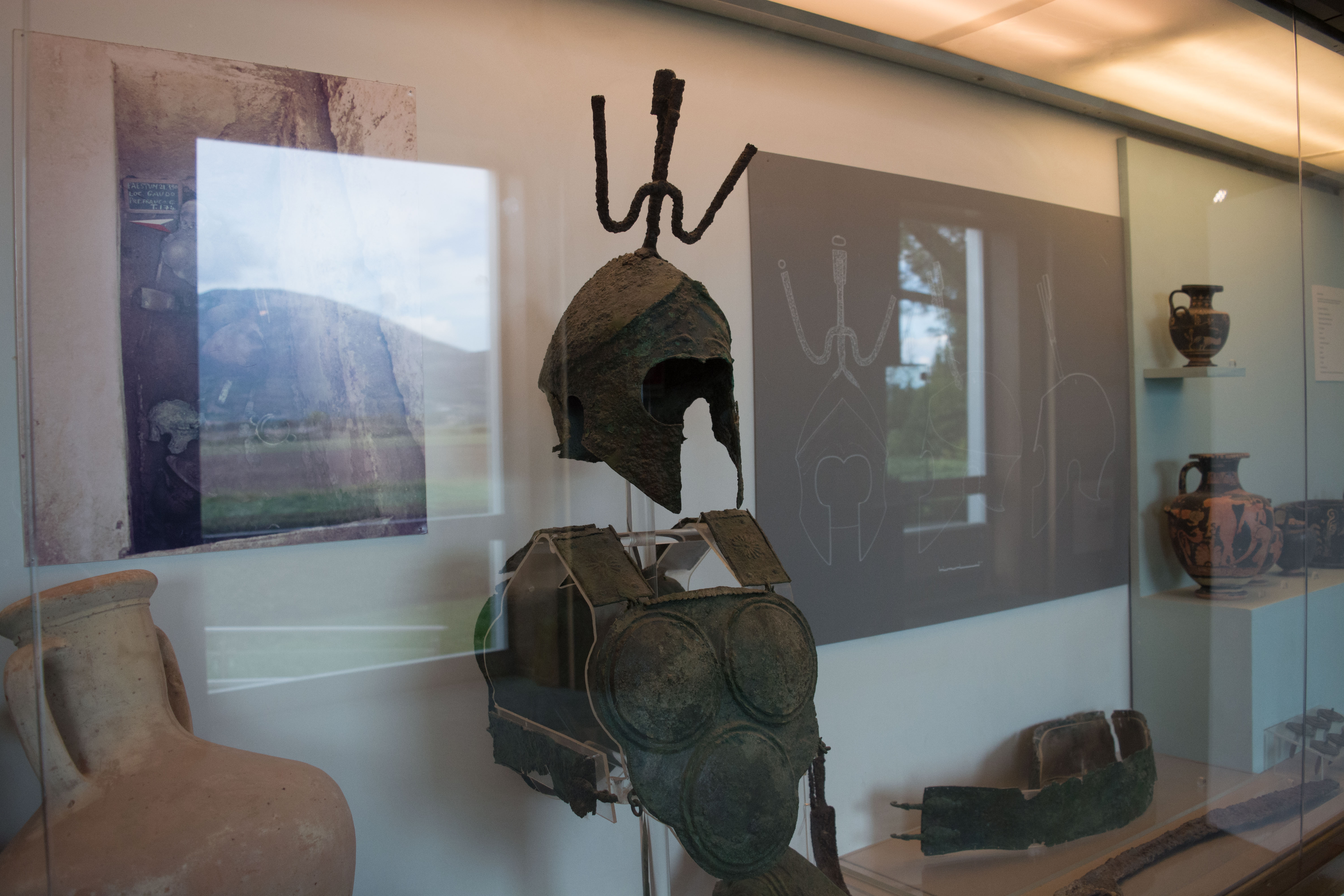
In the next room was a tomb painting showing a soldier on horseback wearing the same suit of armor:
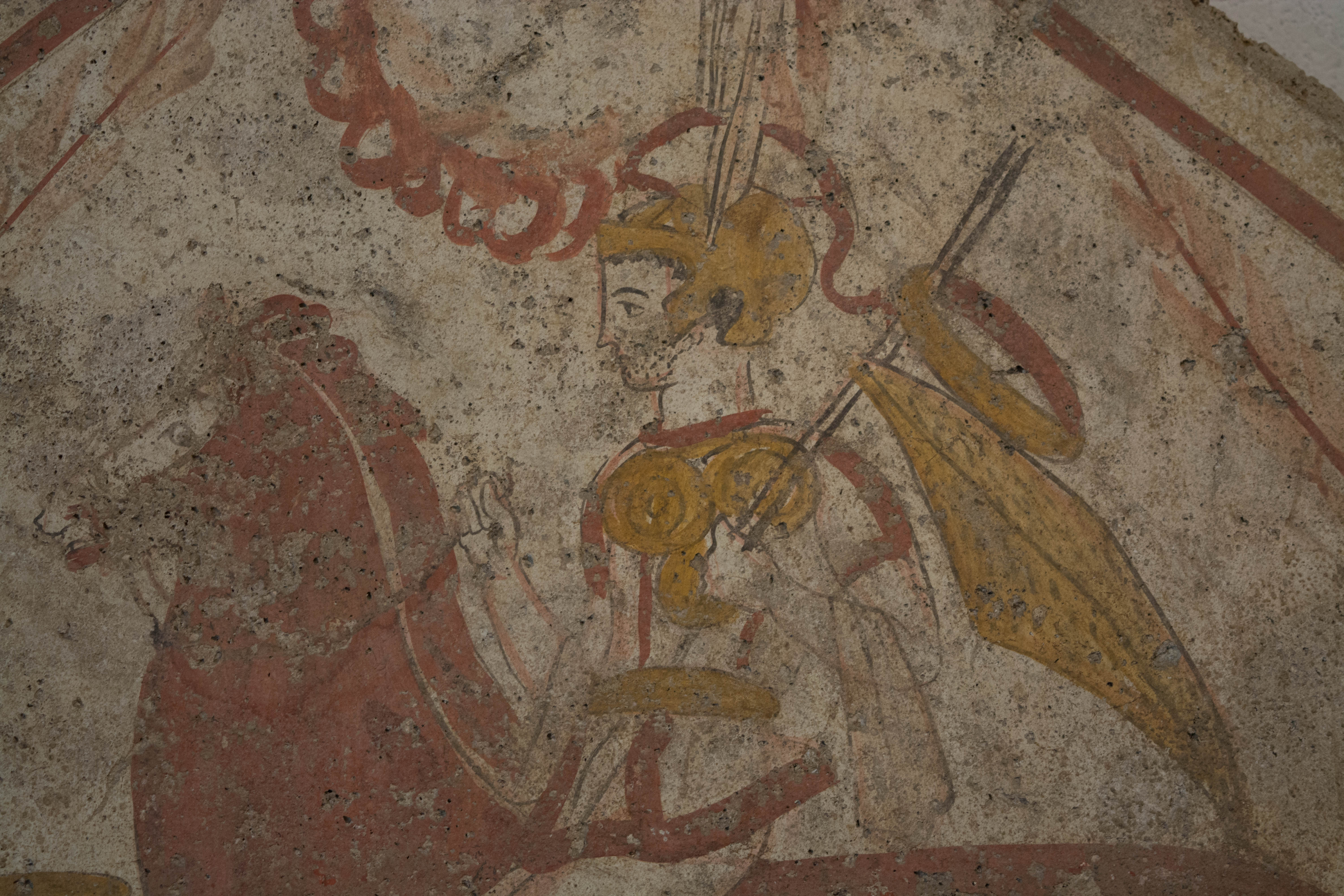
Also nearby was a tortoise shell, once used as a musical instrument, and a painting showing it in use:
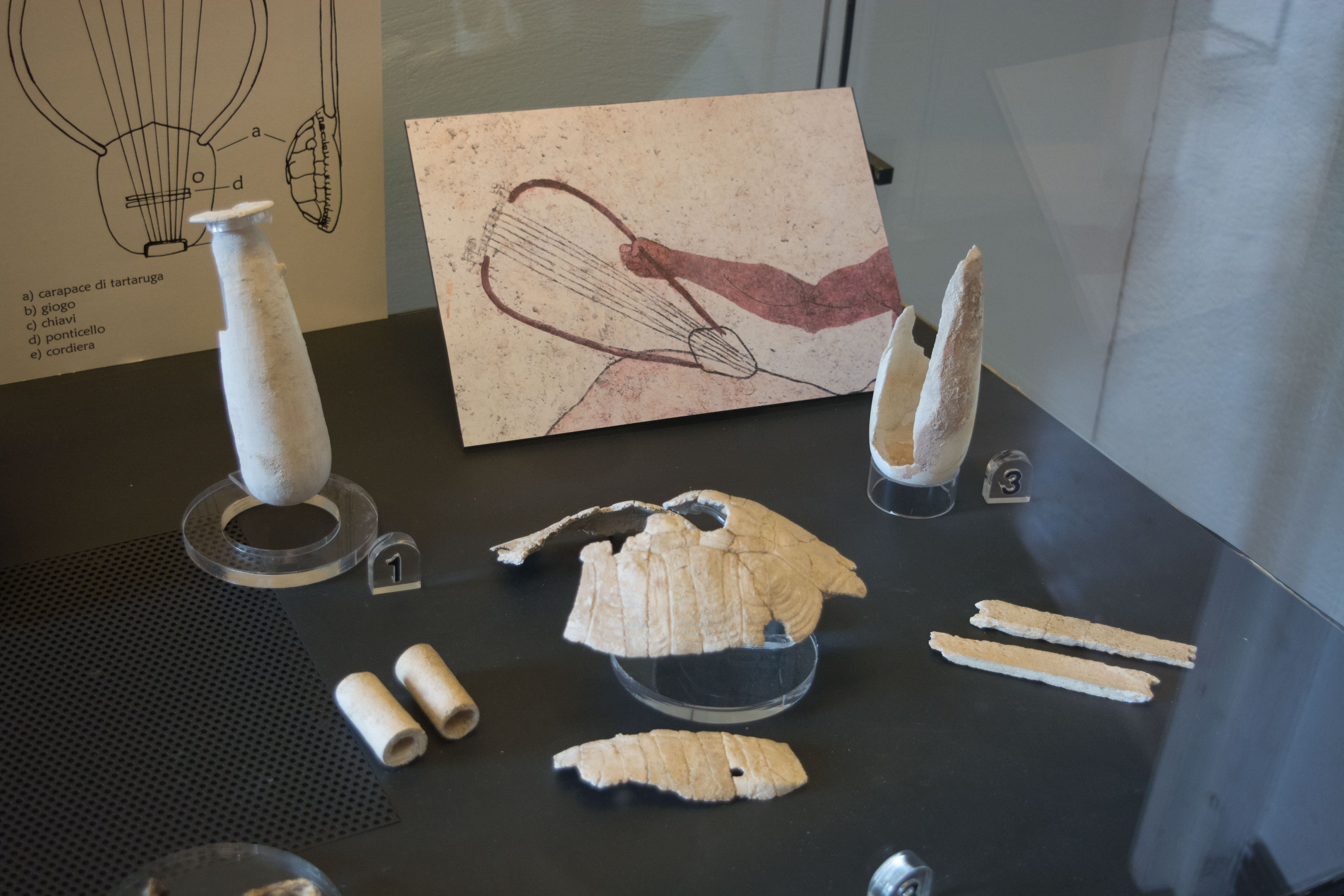
This museum is also home to the famous Tomb of the Diver, a very impressively painted tomb that dates to 470BC:
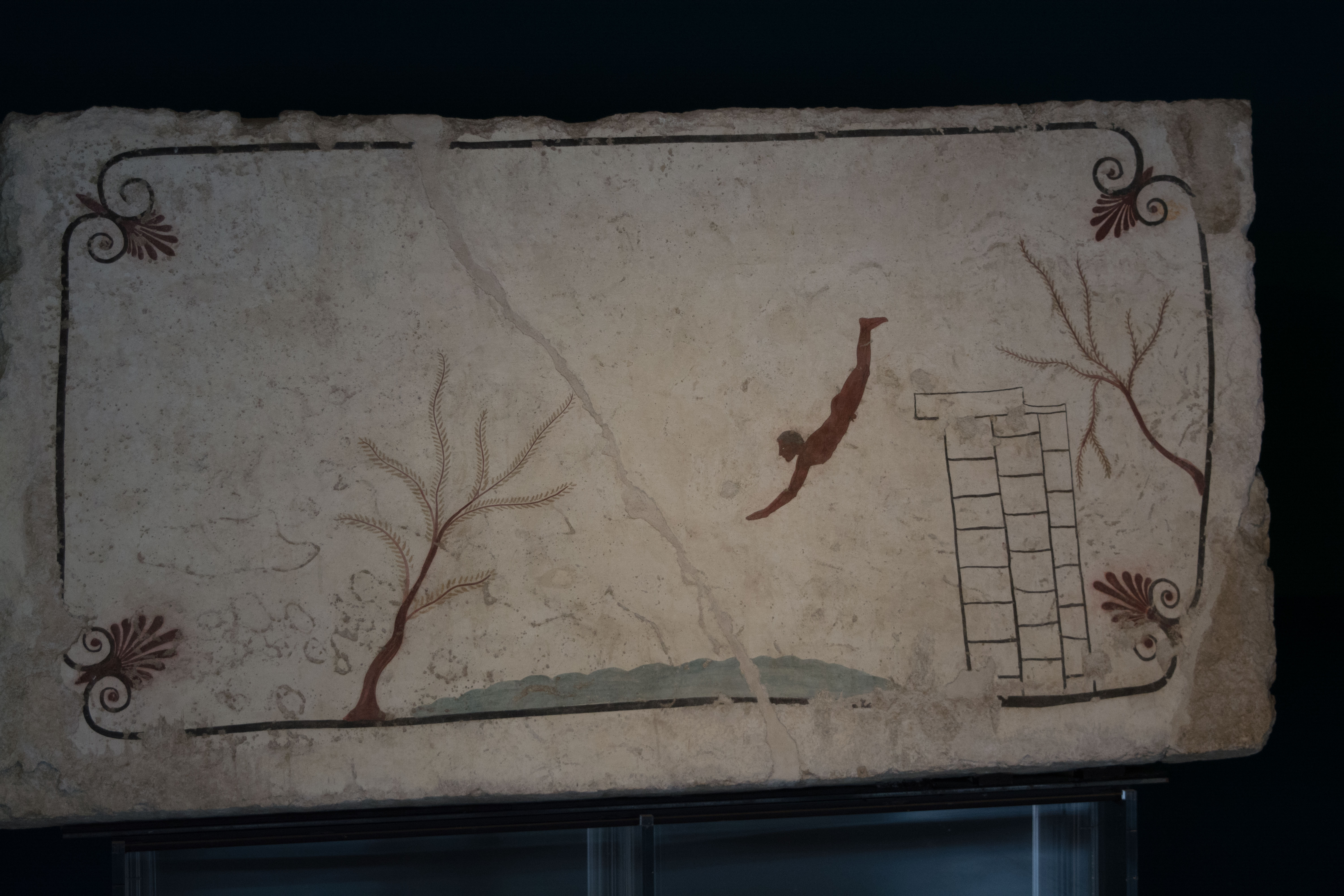
And that was all for day 2! After the museum we headed back to the hotel for a group dinner and a lecture preparing us for what we would see in the Ruins of Pompeii tomorrow.
